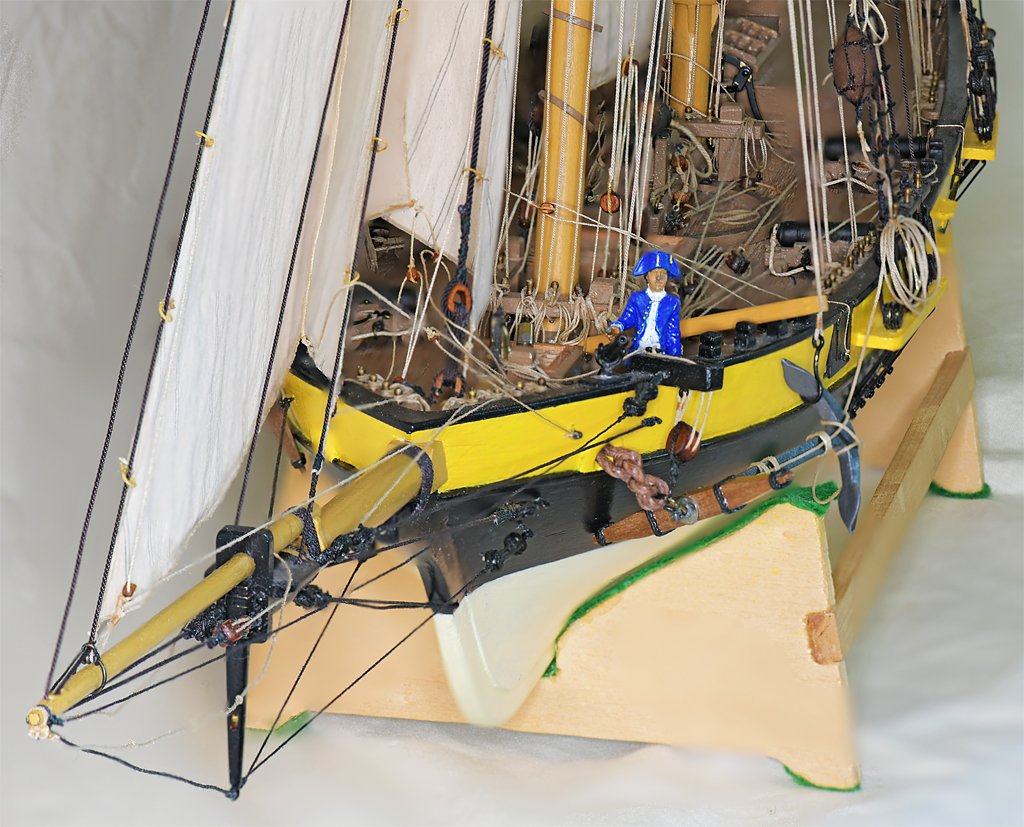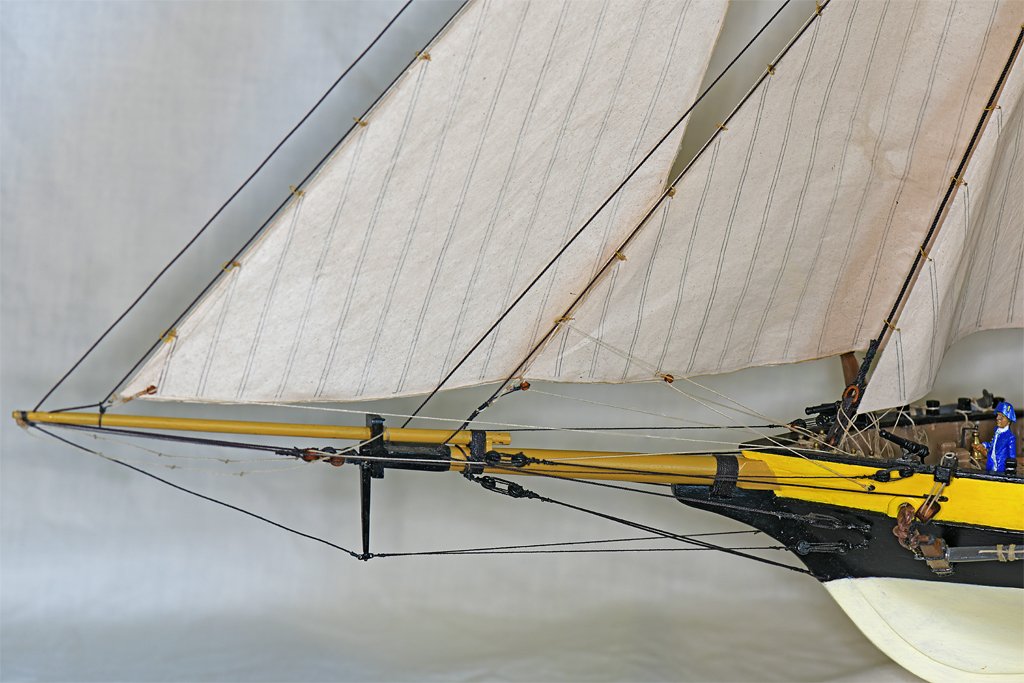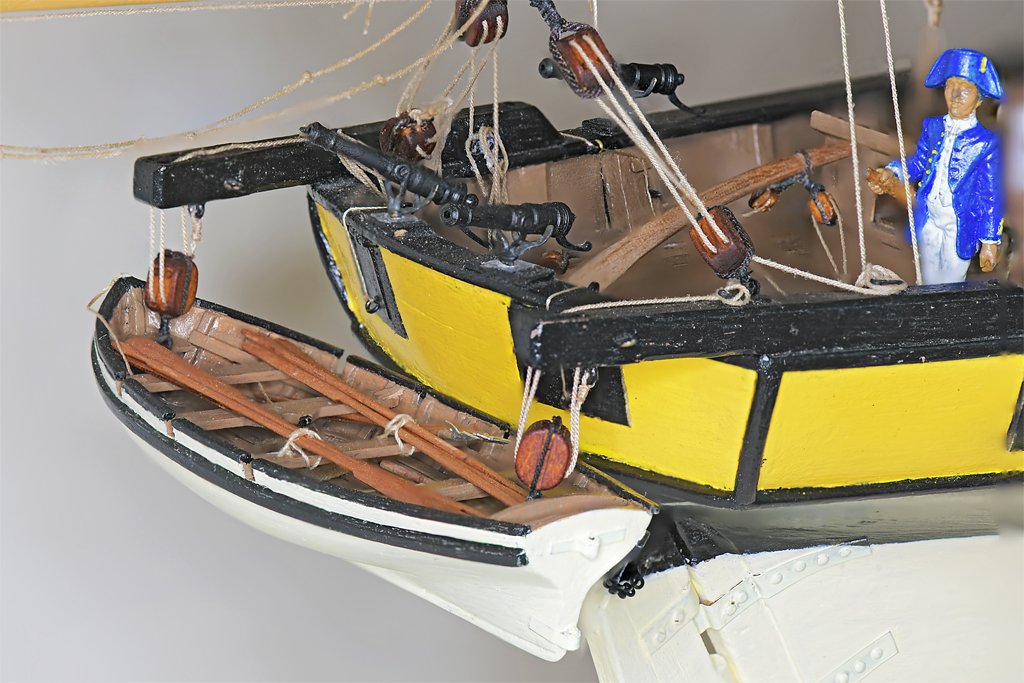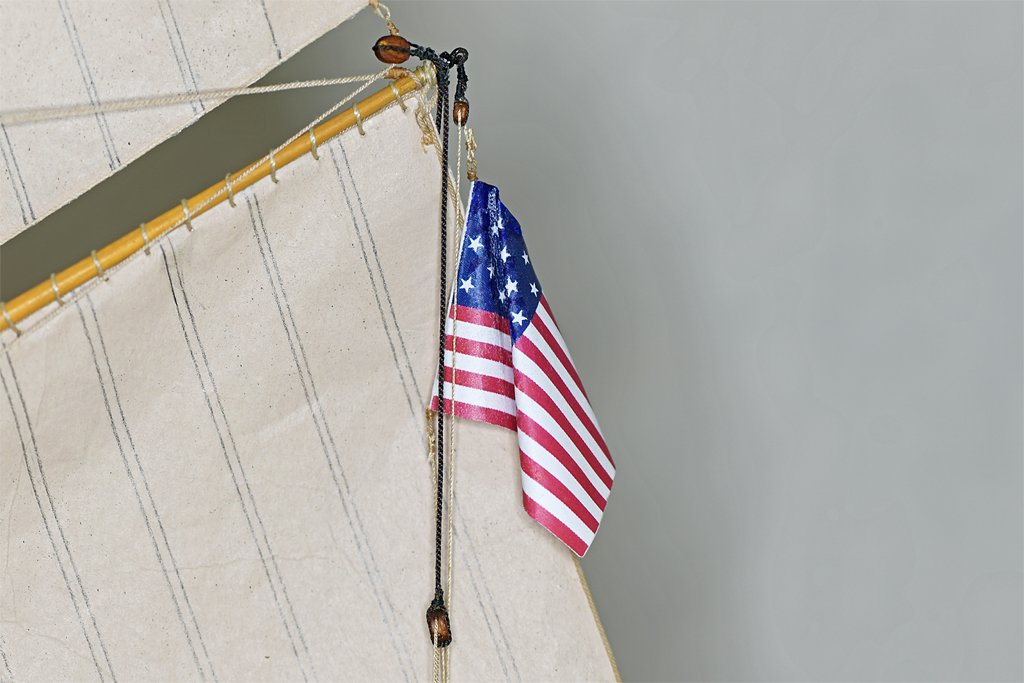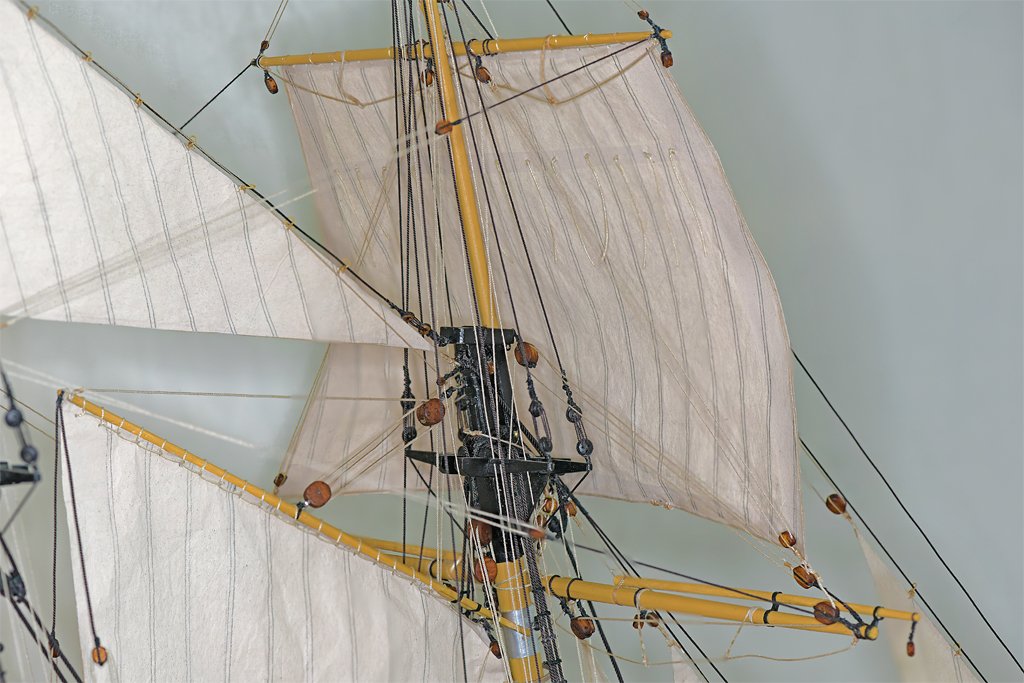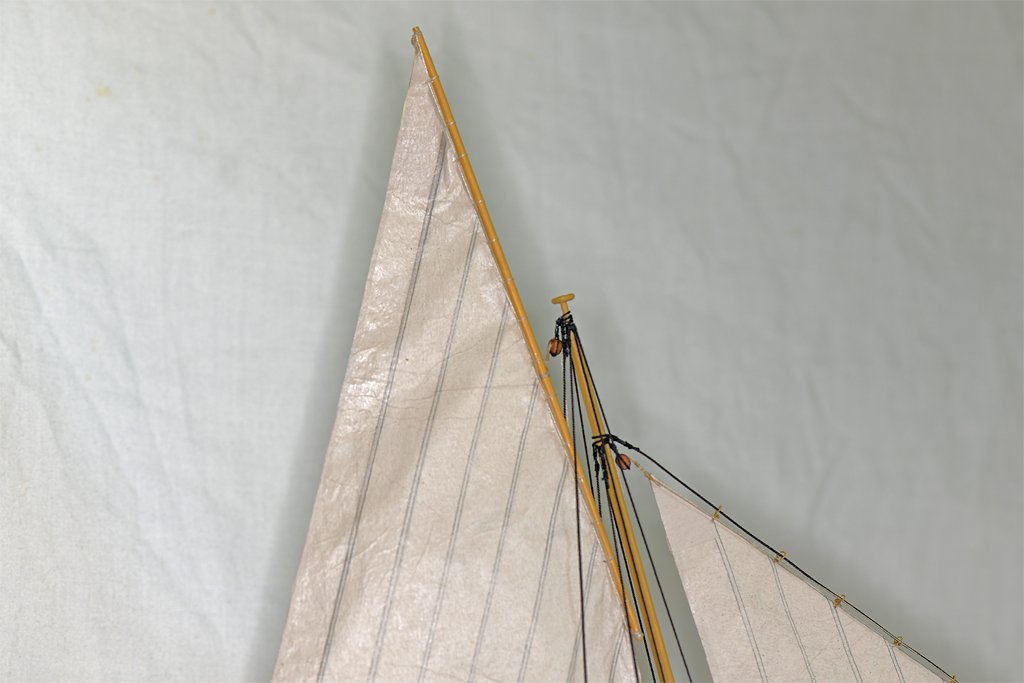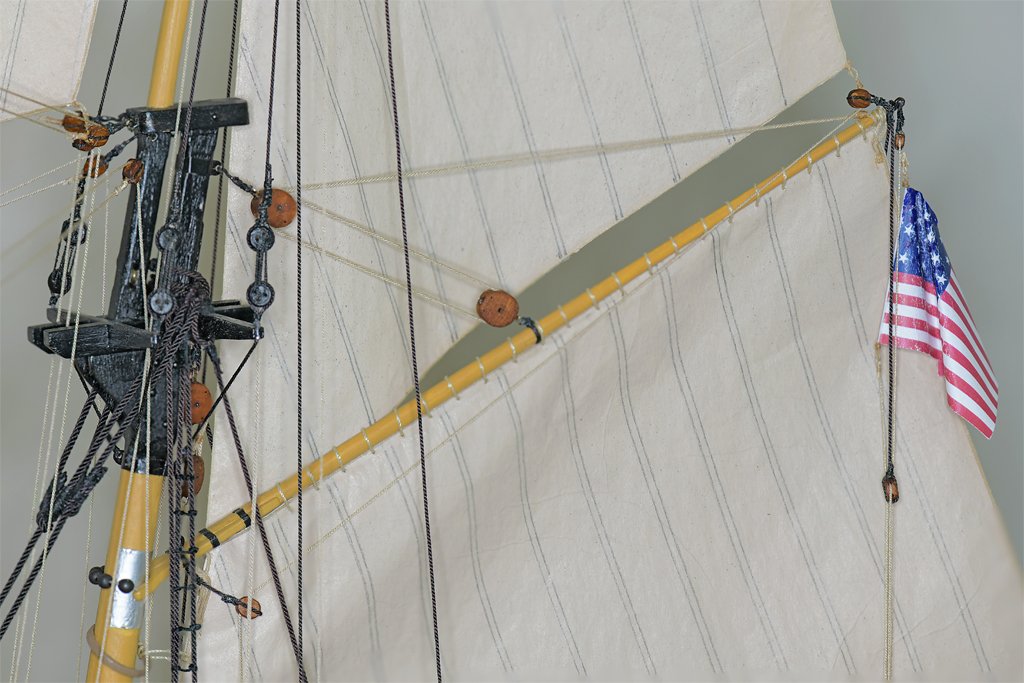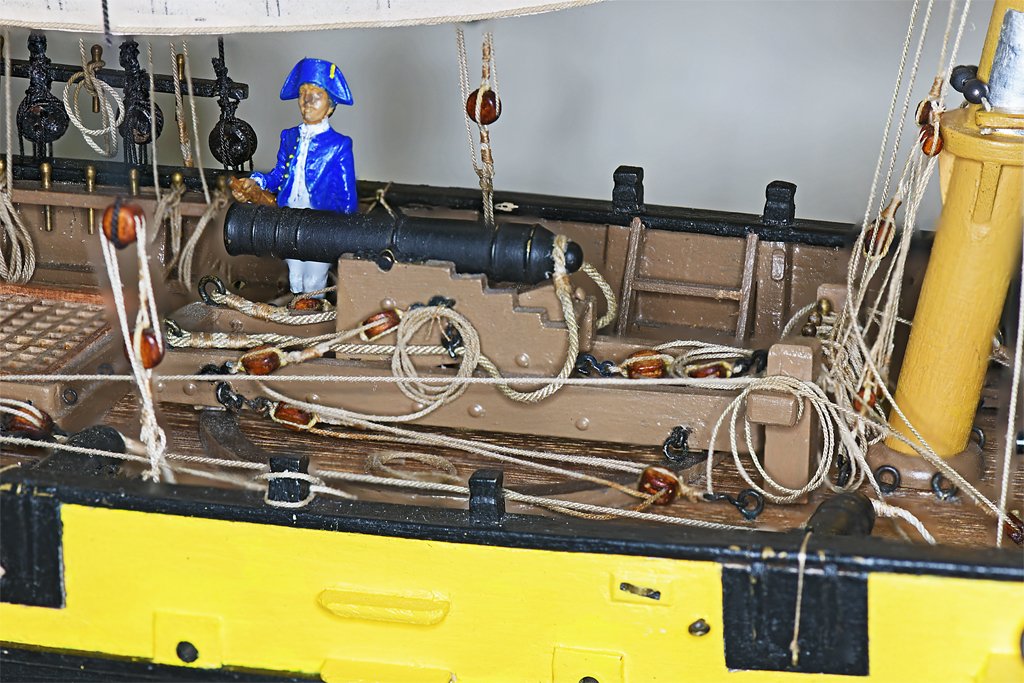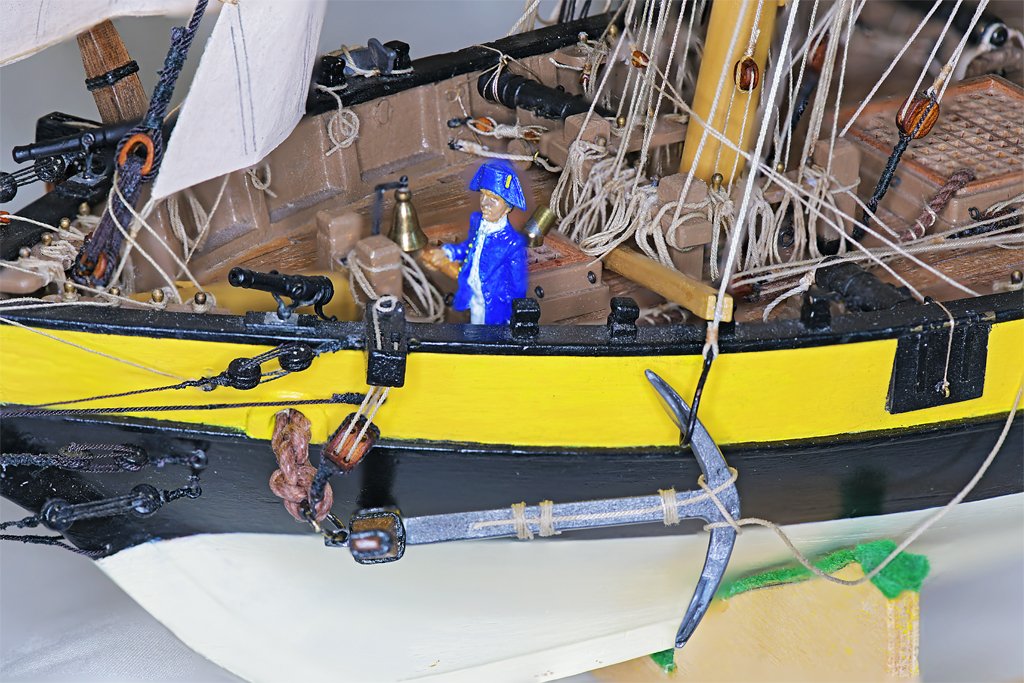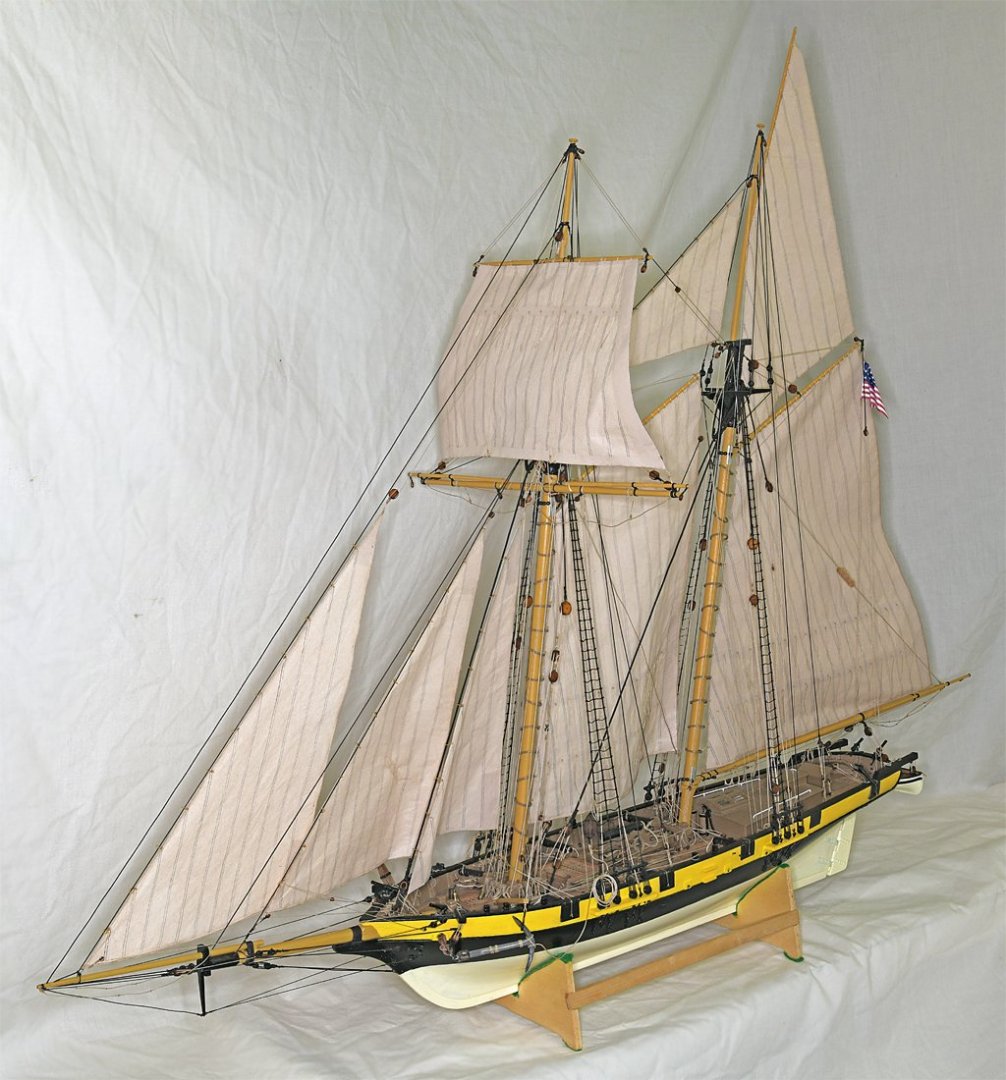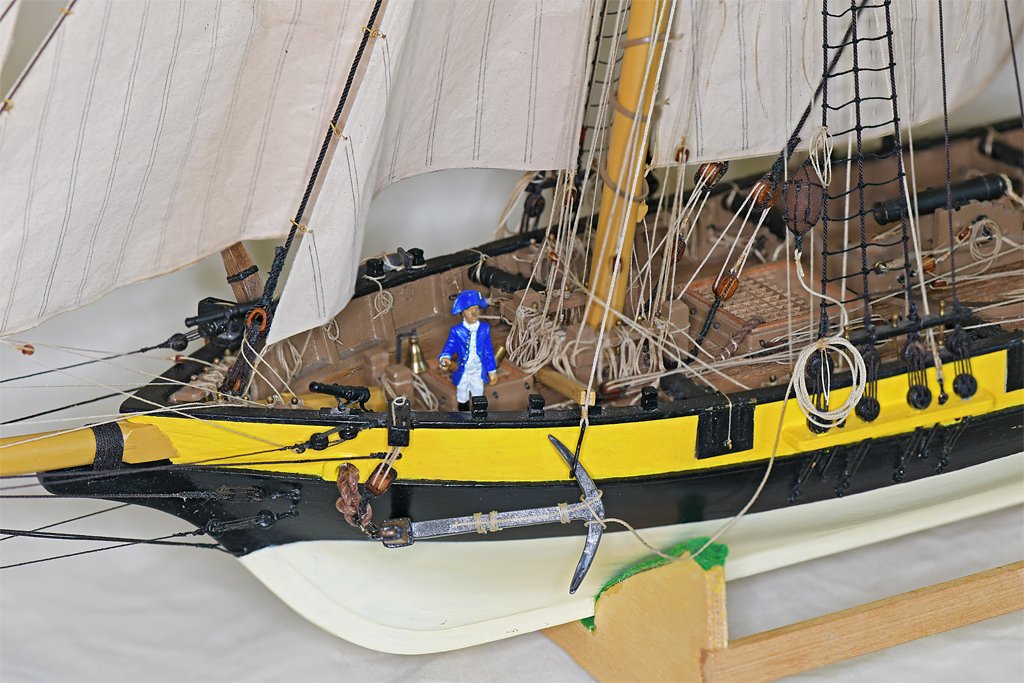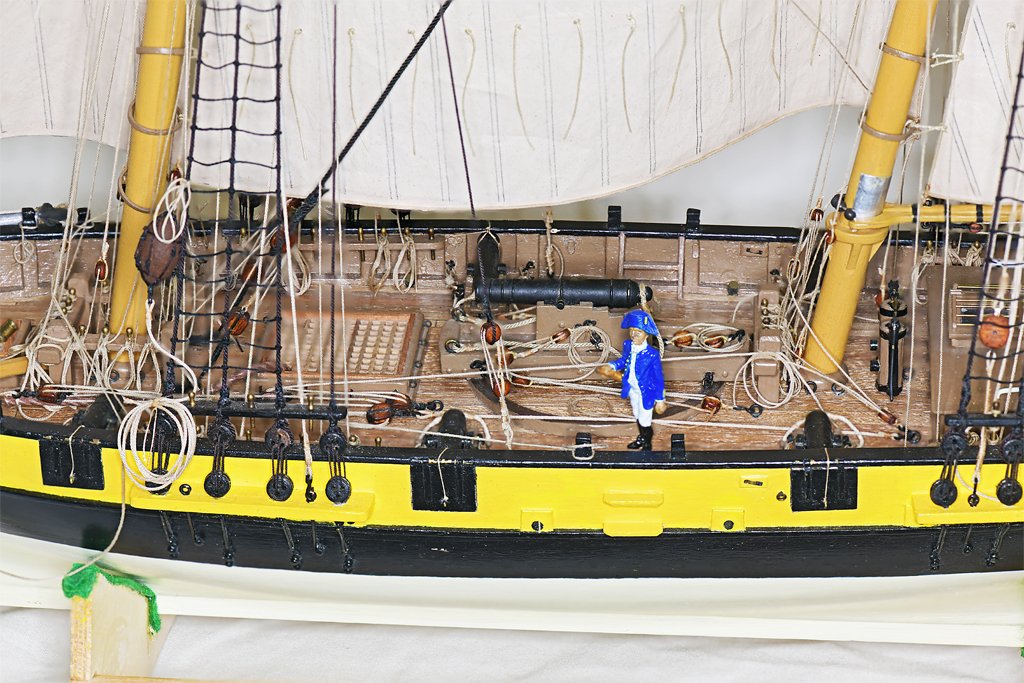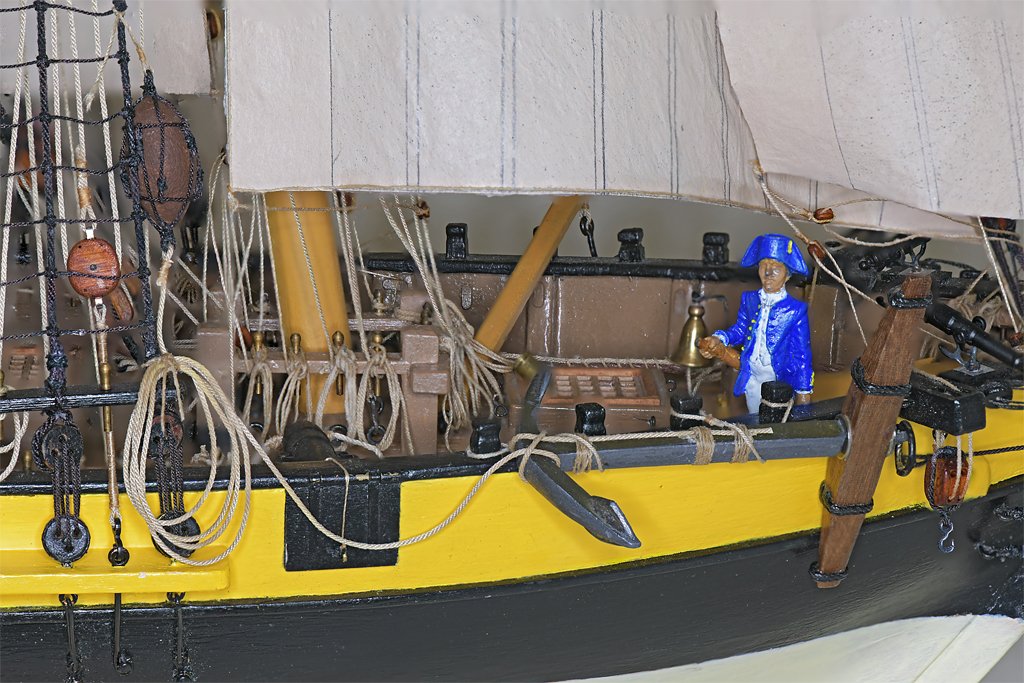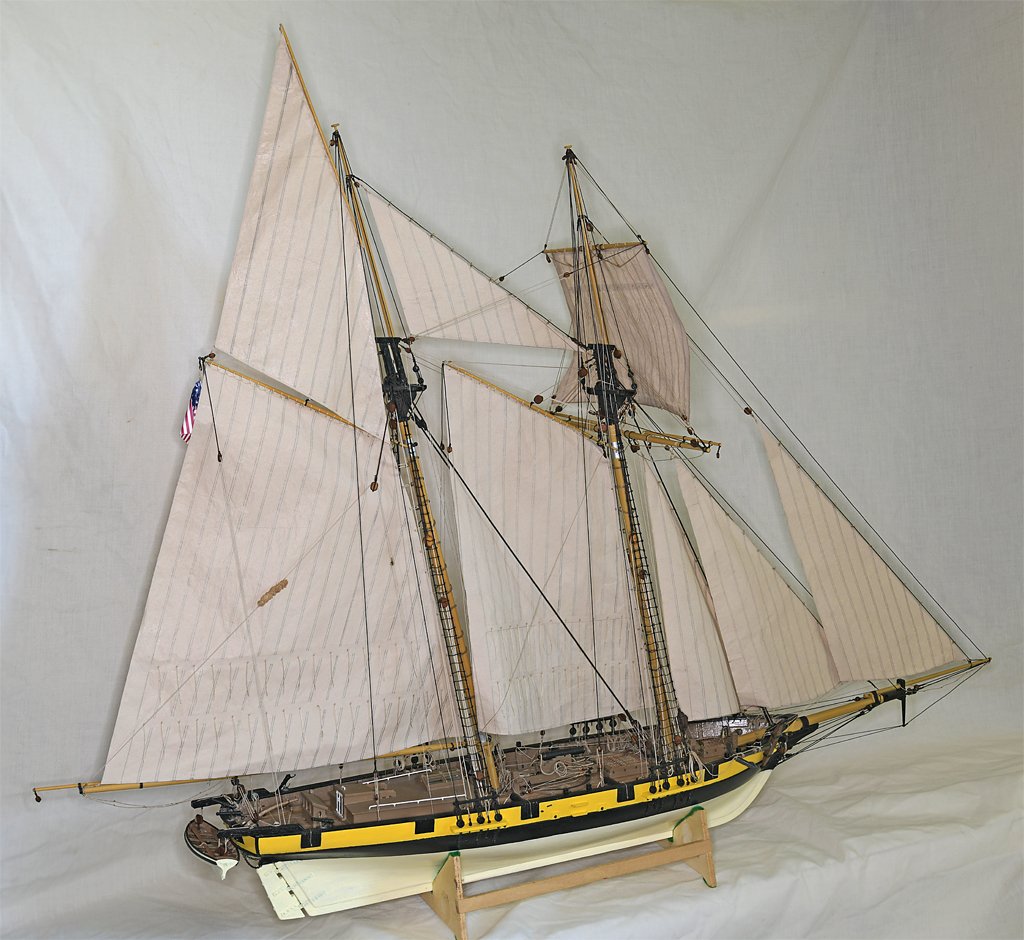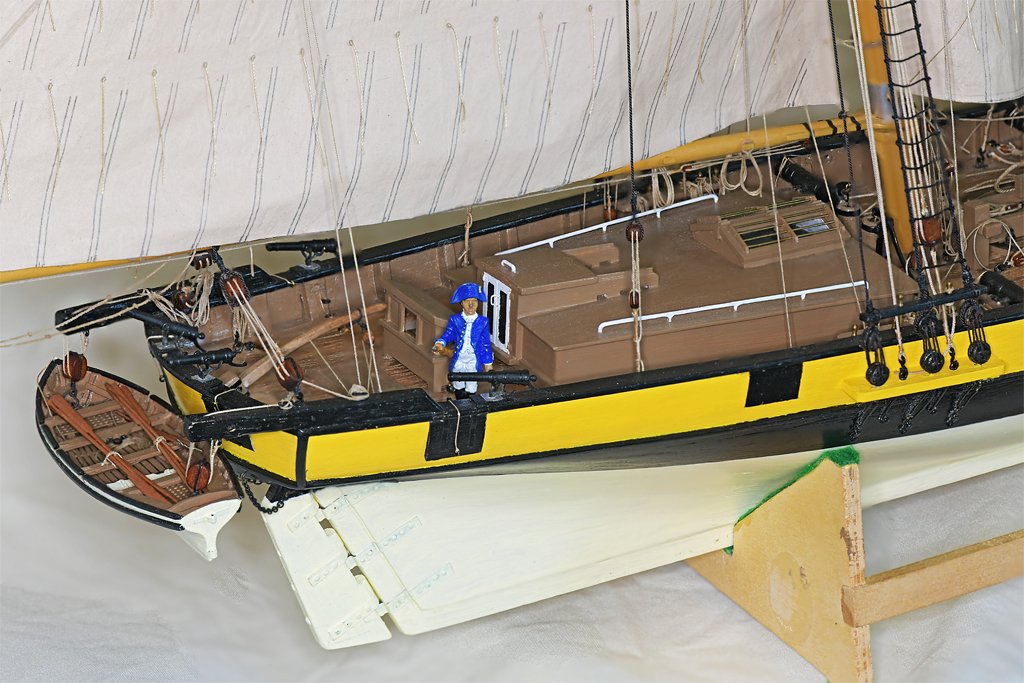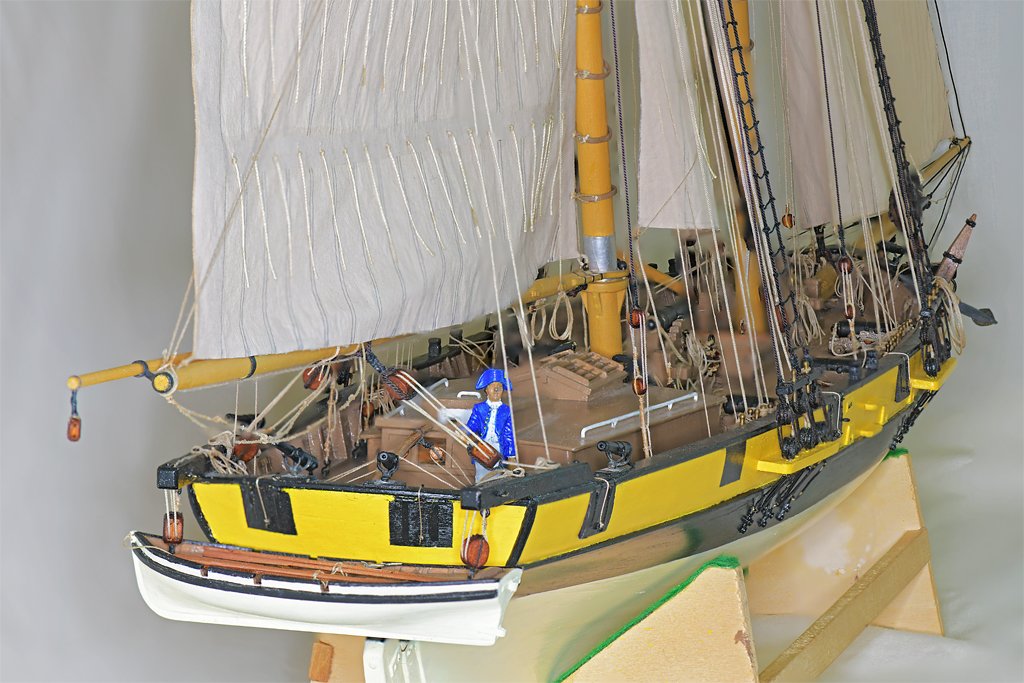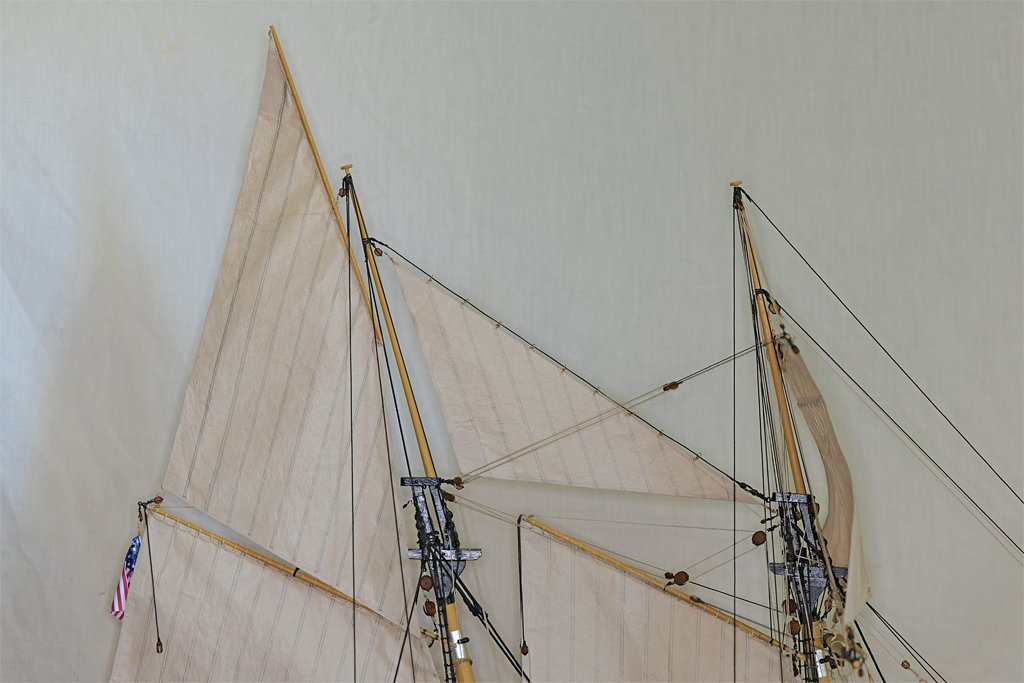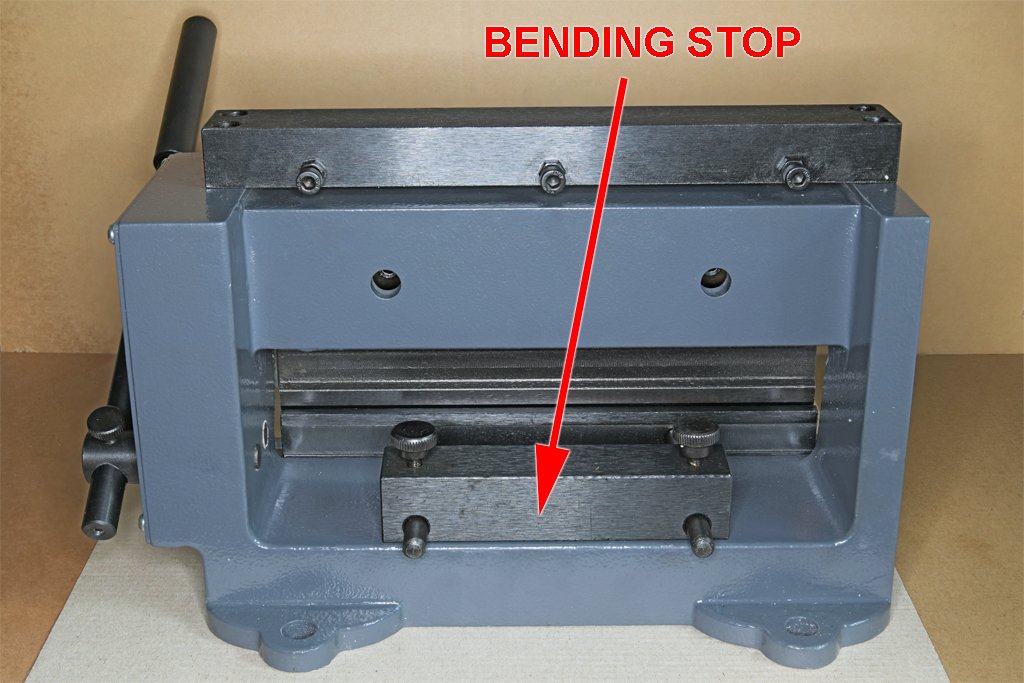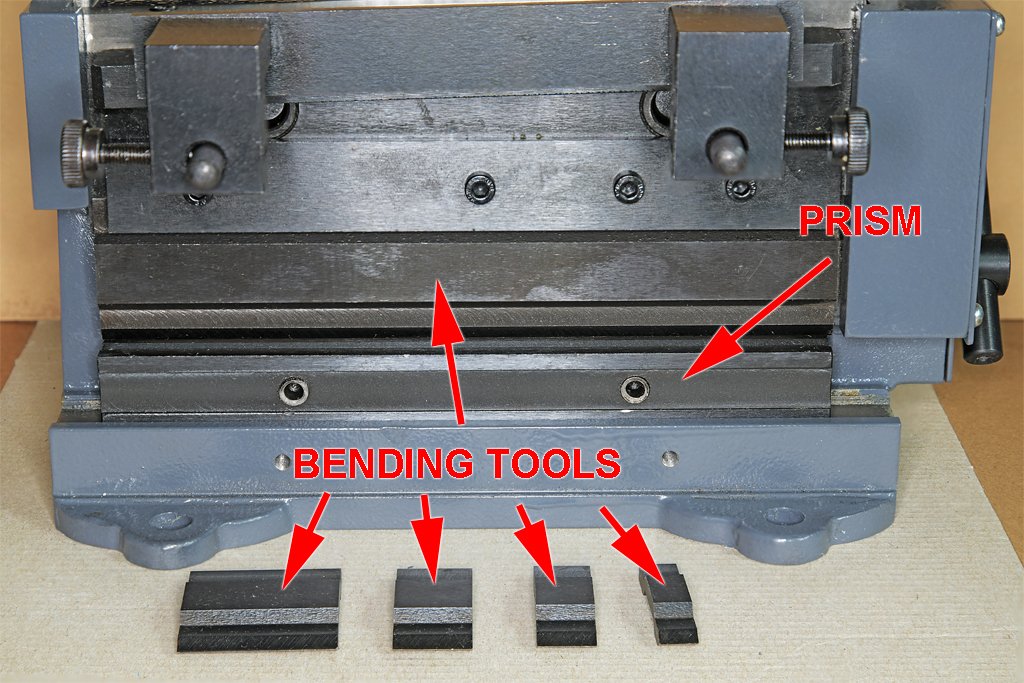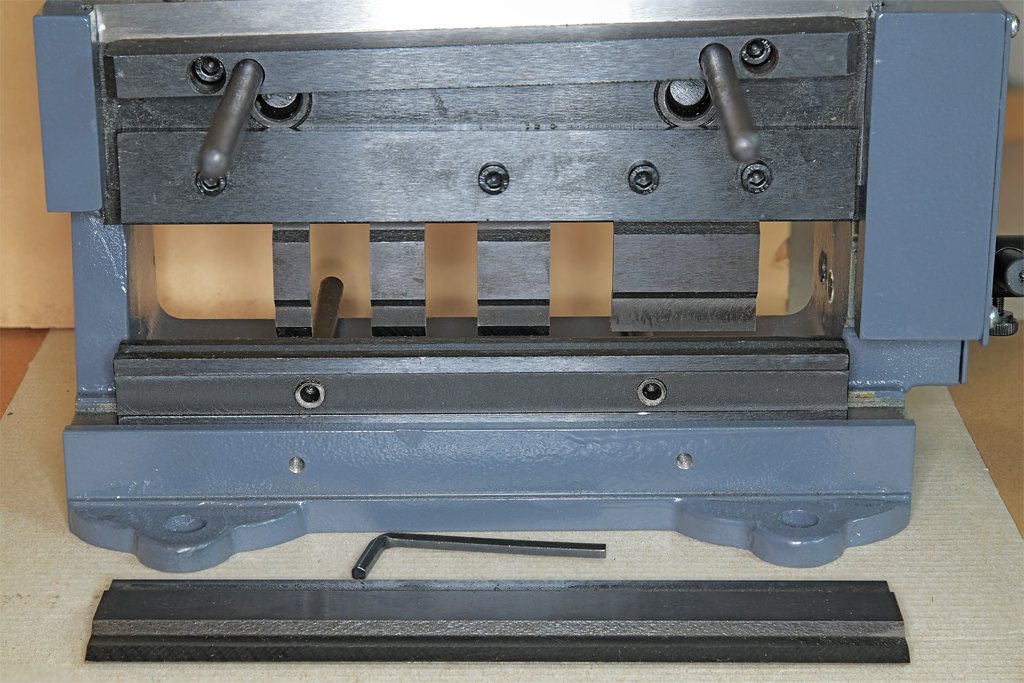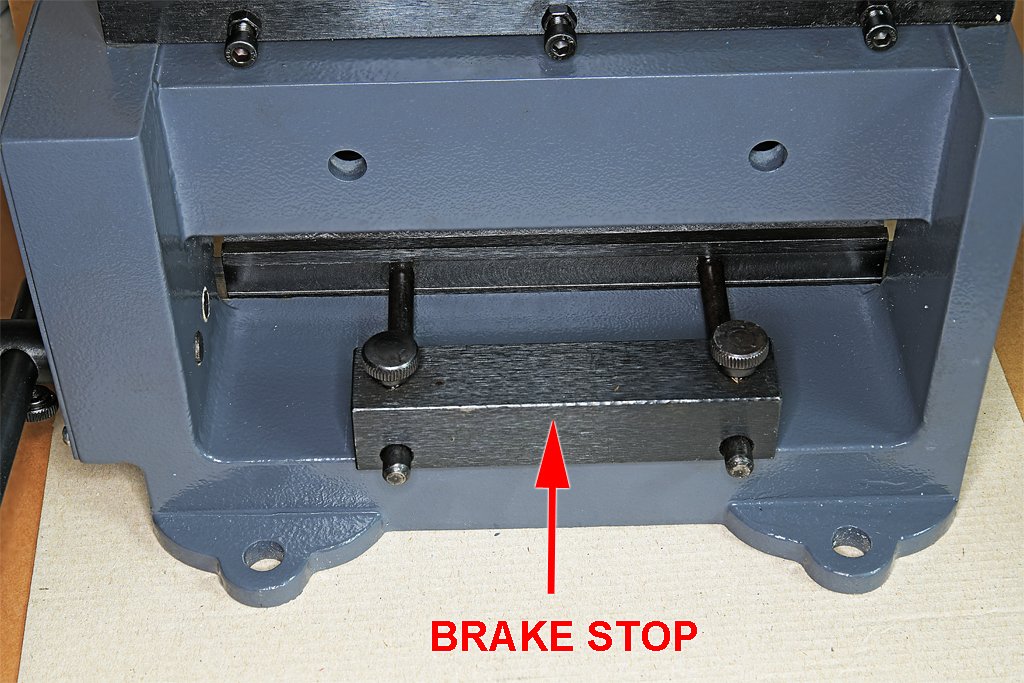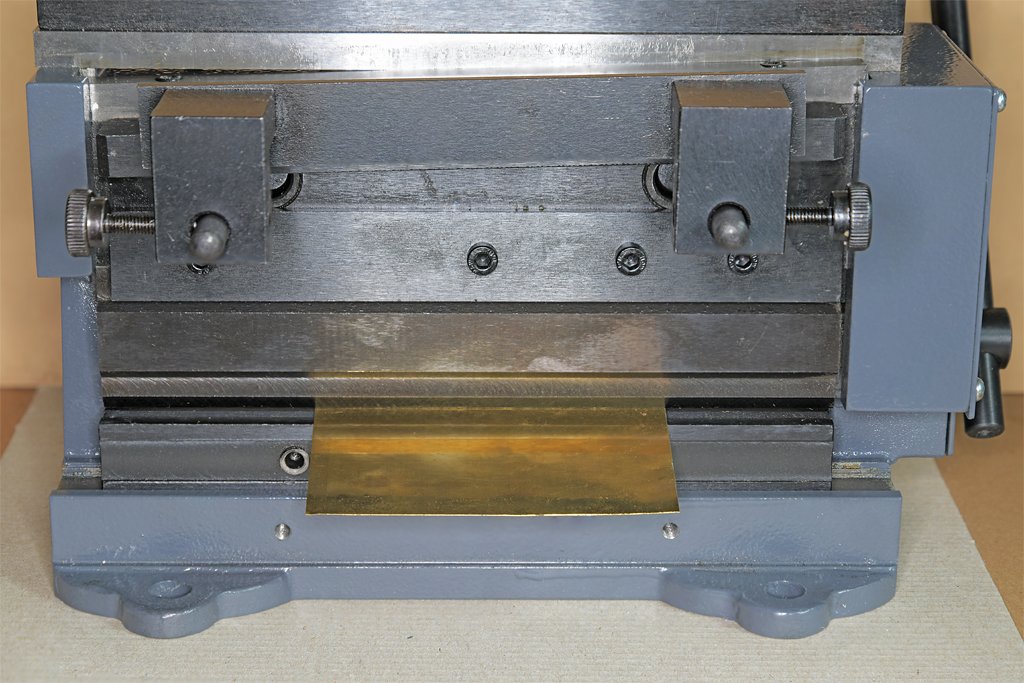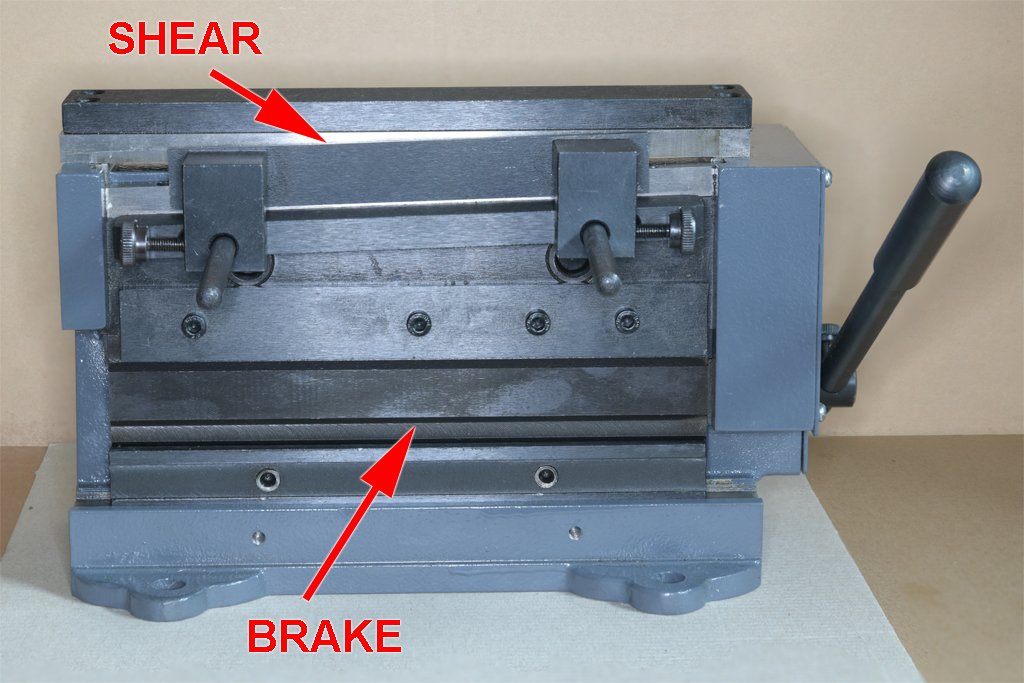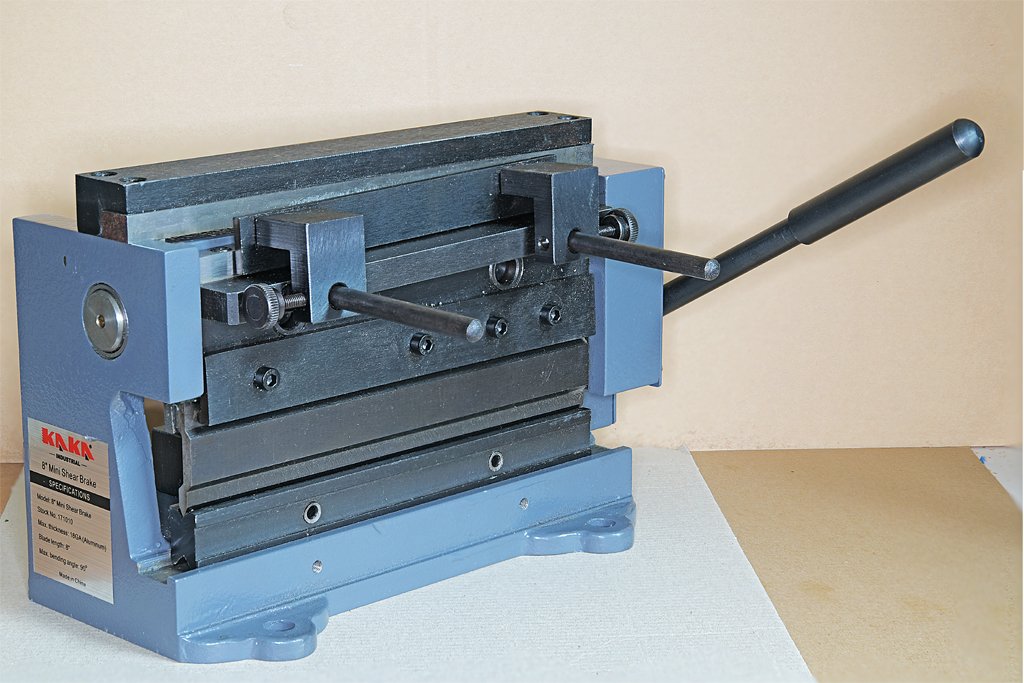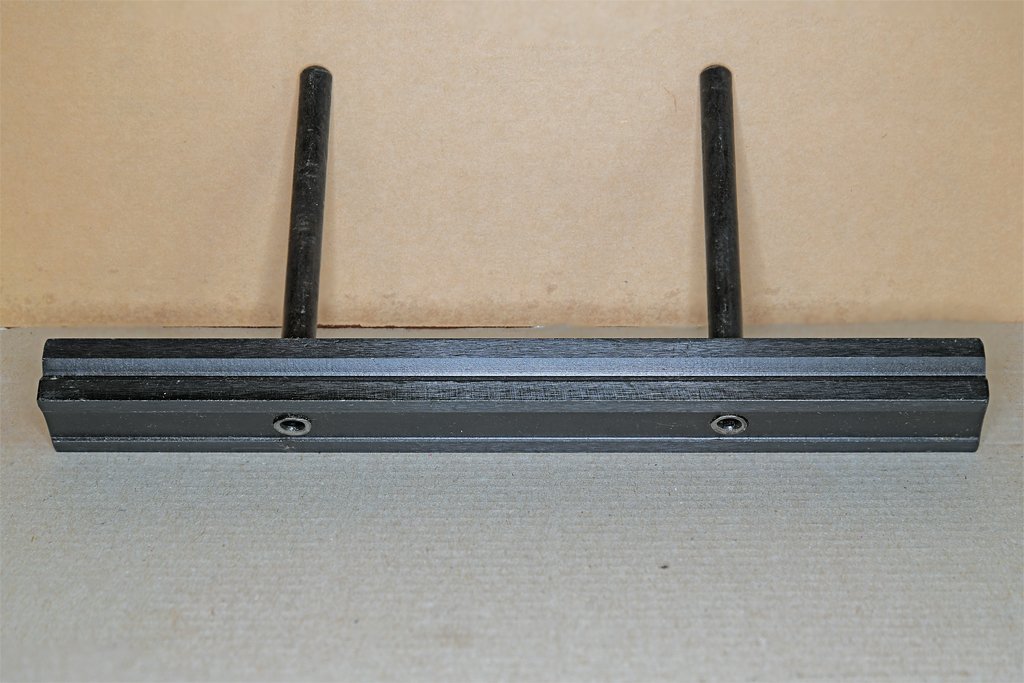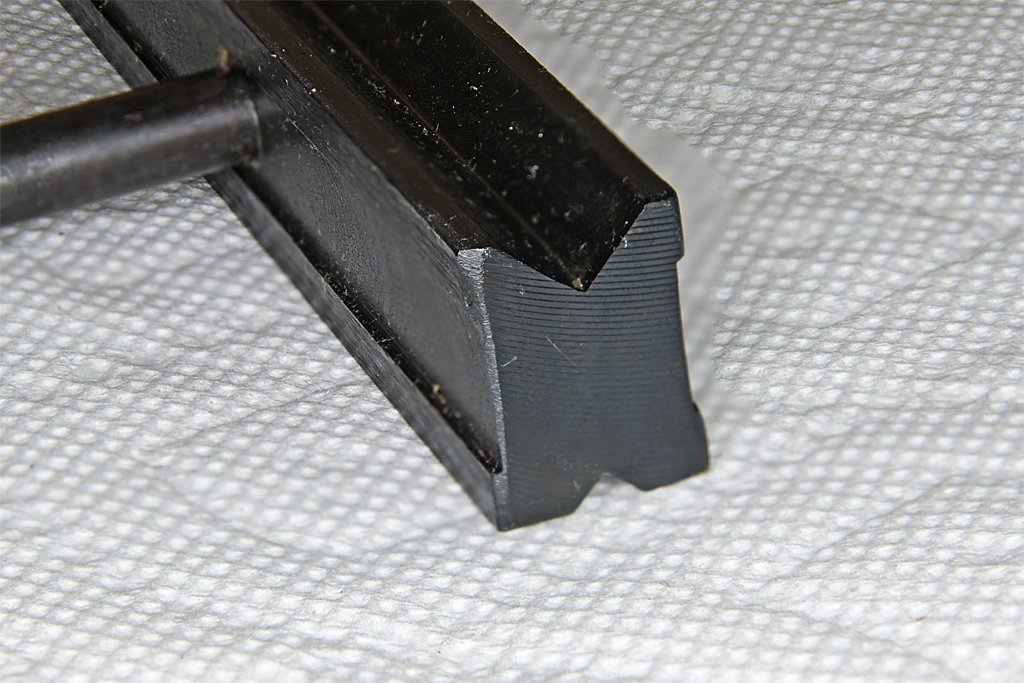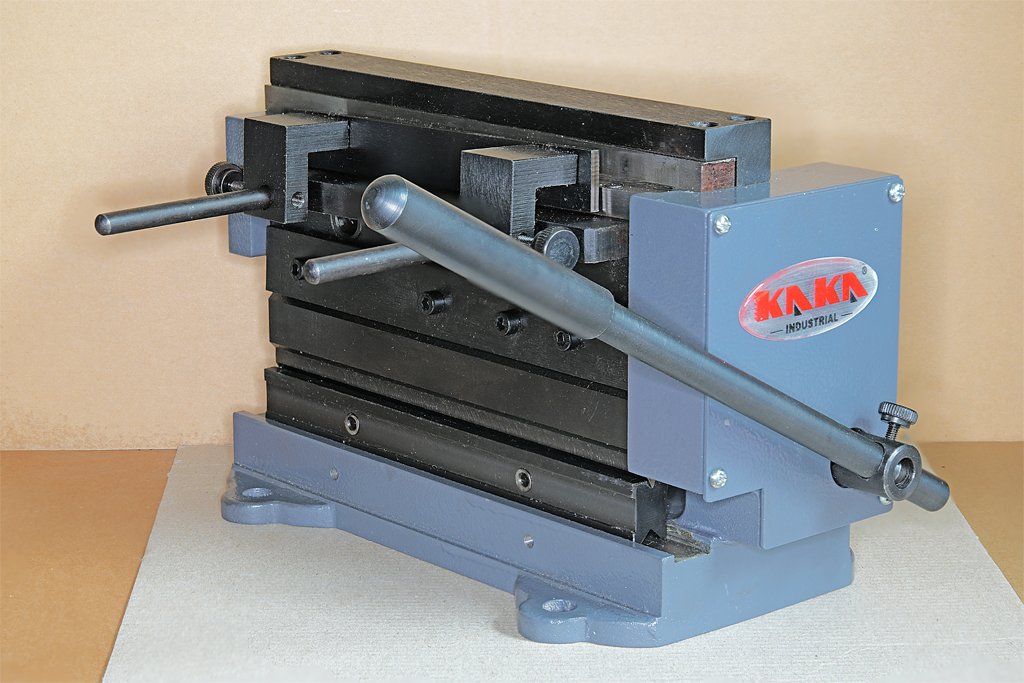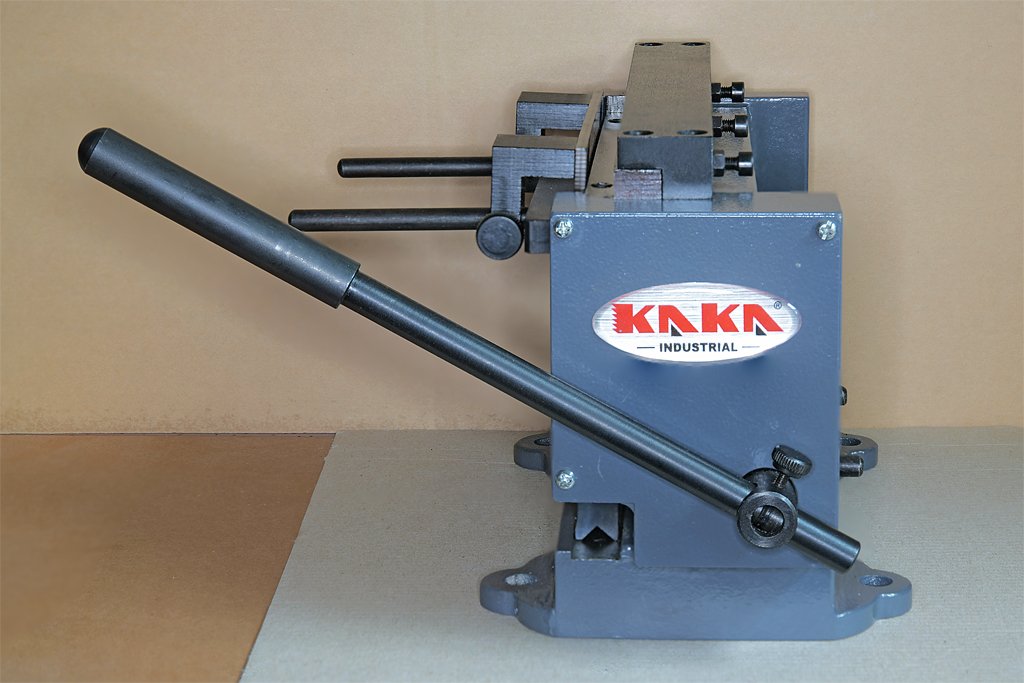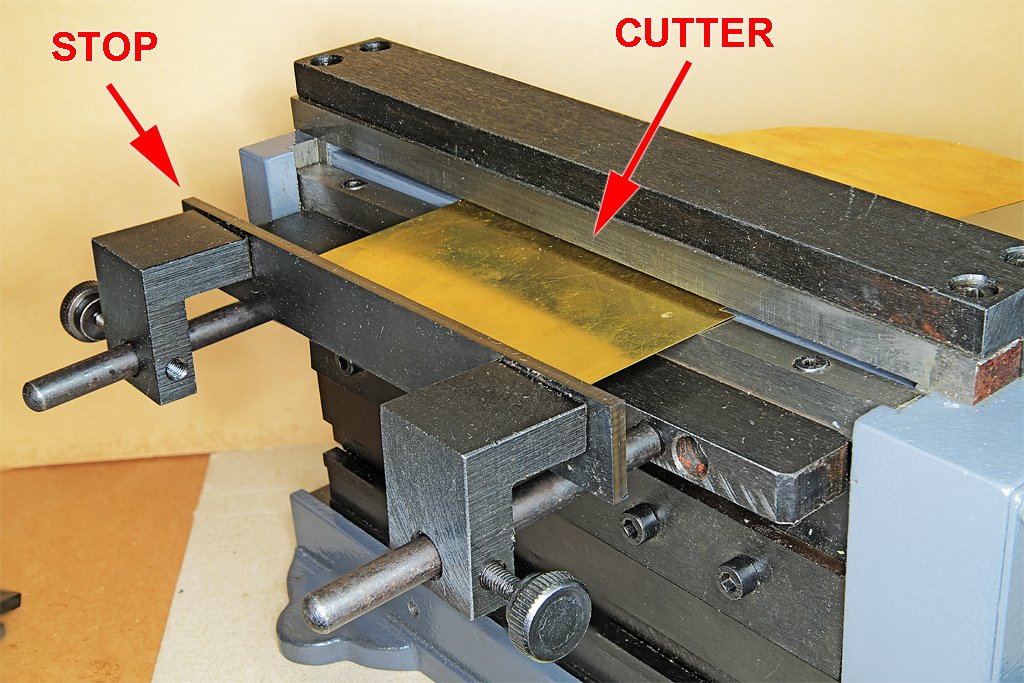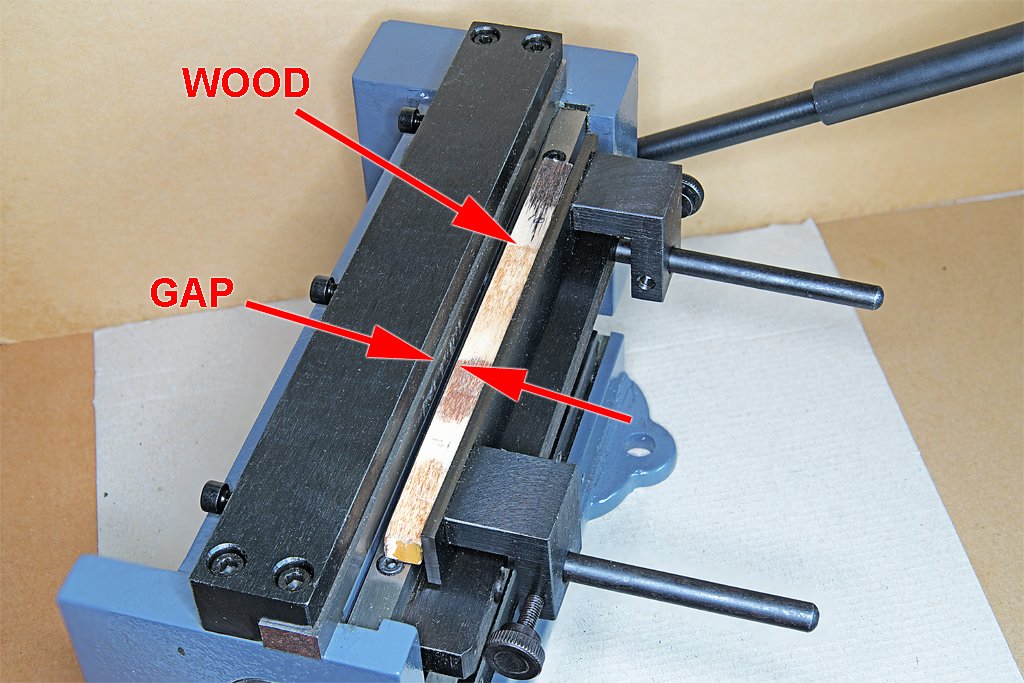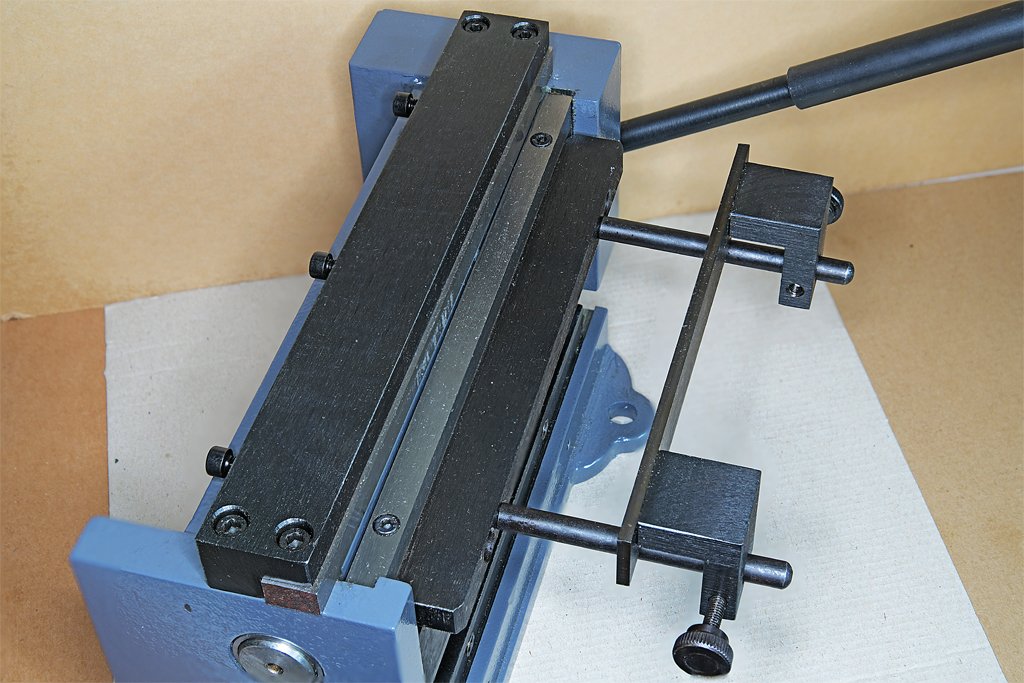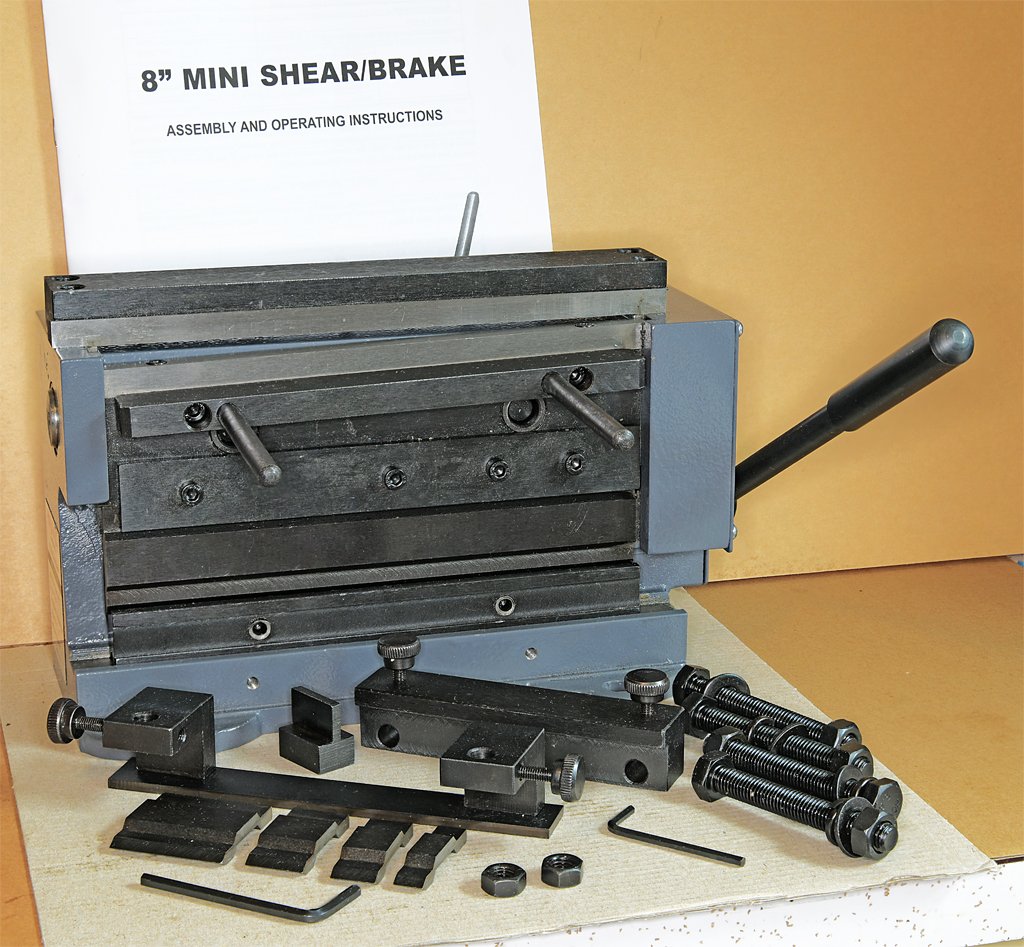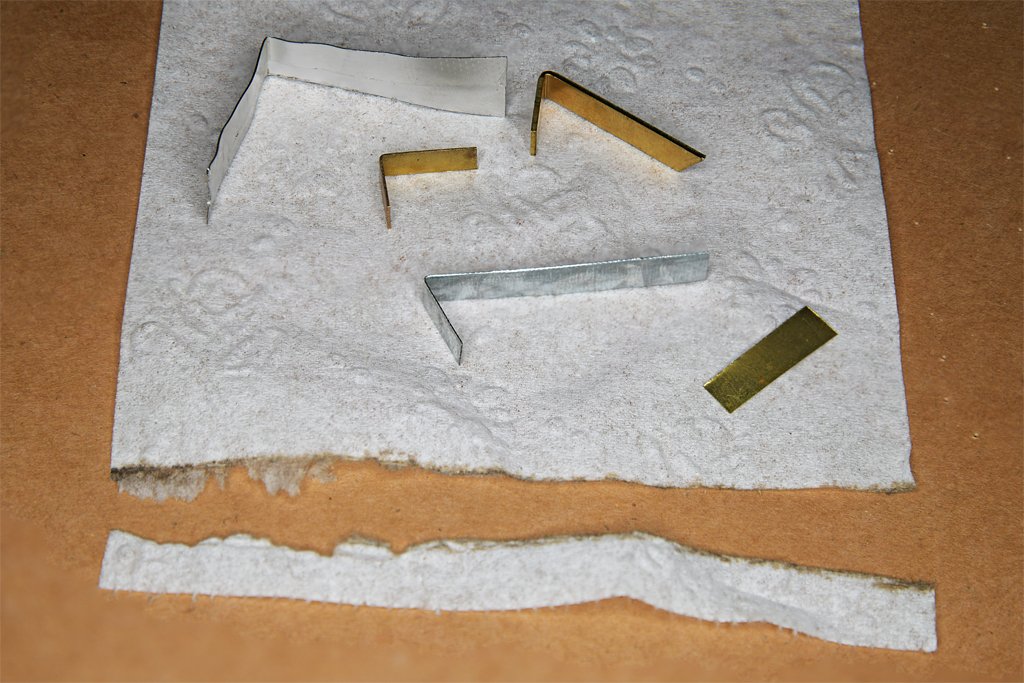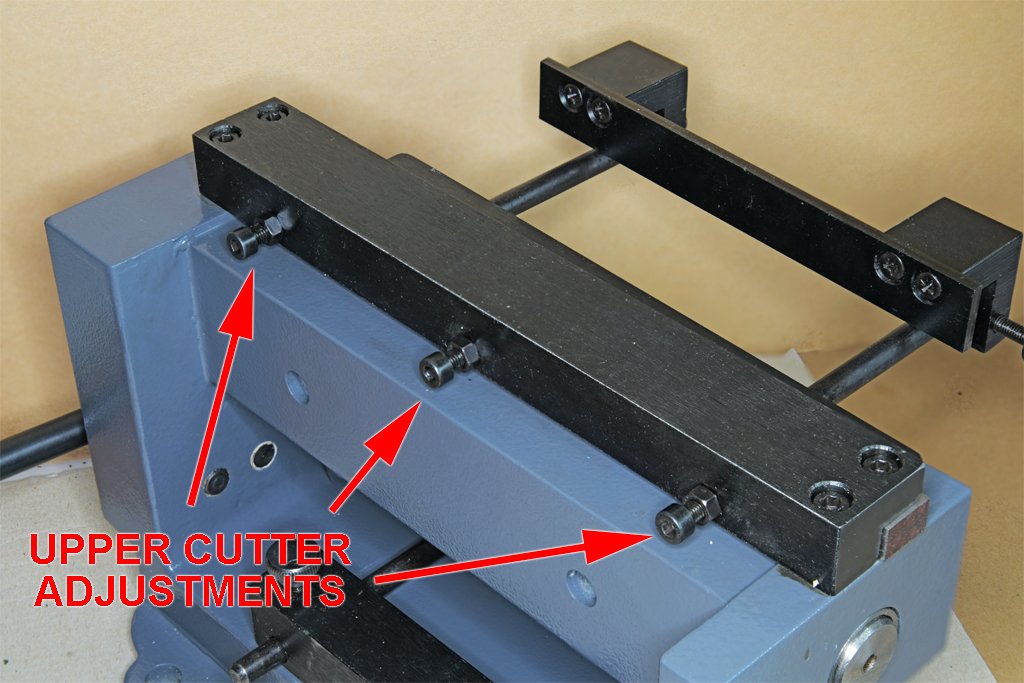-
Posts
2,422 -
Joined
-
Last visited
Content Type
Profiles
Forums
Gallery
Events
Everything posted by Dr PR
-

Gold solder for brass
Dr PR replied to Richard Braithwaite's topic in Metal Work, Soldering and Metal Fittings
tmj is right about the solder stain on brass. Solder dissolves into the brass, so no amount of polishing can eliminate the solder color. I was curious how the people who make brass model train engines and cars manage to solder everything together without any visible solder stain. They use resistance soldering mostly for anything that will be visible after the model is finished. Very small (1 mm x 1 mm or smaller) bits of solder foil are sandwiched between the parts and the electrodes are connected/placed on the two parts. A quick zap of current through the pieces melts the solder and it flows into the joint but no where else. Maybe a tiny solder fillet is visible at the junction with a magnifier but otherwise no solder is visible. You can make your own solder foil by hammering ordinary round solder flat. It takes a lot of planning to make the brass parts fit tightly before soldering, but the results are beautiful. I have done something similar with an ordinary soldering iron where one side of the joint will be hidden inside the model. I just lightly tin each side of the joint to be soldered and then put the two pieces together and heat them until the solder melts. Sometimes I just clamp the two pieces together and brush some liquid citric acid based flux into the joint (I prefer this flux because it smells like oranges). Then I place some small diameter solder against the inside or hidden side of the joint and heat it with a soldering iron. The solder flows into the joint where the flux is but no further, with none visible on the outside or visible joint seam. But this can leave some solder stain on the inside where the soldering iron touched the brass. -
This is a very pretty model and nicely built. I am enjoying your build and waiting to see how you make the masts and rigging.
- 52 replies
-
- Grecian
- Vanguard Models
-
(and 1 more)
Tagged with:
-
I seem to recall reading somewhere that the copper plating fit between the keel and the wormshoe (false keel). The wormshoe was a sacrificial piece to protect the keel and was replaced when necessary. It looks like the bottom of the keel was coppered first, then the wormshoe was stapled to the keel. Then the copper plating was placed on the keel. I can't tell from the photos, but perhaps the angled strip along the joint between the keel and garboard strake is there, but under the plates on the keel and those on the garboard strake?
- 5 replies
-
- copper plates
- Braak
-
(and 1 more)
Tagged with:
-
Mark, The 1/8 x 1/8 inch strips are boxwood. This could be anything since it is hidden inside the deckhouse. The deckhouse sides and decks are SIG 1/16 inch plywood - I don't know what type of wood. The deck planks are 1/16 x 1/16 inch strips. That is to scale, but is pretty small. Nibbing will be pretty tricky. The grout was 1/4 inch (6 mm) on the ship. That comes out to about 0.005 inch at 1:48 scale. I think thin black paper would make a nice clean grout, but that means working with a LOT of thin paper strips! I did this on the schooner build. I have experimented with pencil on the sides of the strips, but it is inconsistent and pretty lame looking. Of course I could use some of the original calking goo we used on the Cape - I saved some in a bottle for use on models, and I even planked a model ship deck with it back in the 1970s! But it is extremely messy. No thanks, once is enough!
- 447 replies
-
- minesweeper
- Cape
-
(and 1 more)
Tagged with:
-
I have some progress to report. I have installed the planksheers and nibbing strakes, and framing for the deckhouse. The planksheer forms the outboard edges of the decking. It is wide up forward where the bulwark frames attach to the planksheer. Aft of the bulwark the planksheer is narrower. Inboard of the planksheer is a separate nibbing strake that the deck planking is nibbed into. This strake is the same width fore and aft. The deckhouse framing is 1/8 x 1/8 inch (3.2 x 3.2 mm) basswood strips glued to the plywood subdeck. My plan is to lay the 1/16 inch (1.6 mm) deck planks against the frame. Then the 1/16 inch (1.6 mm) thick deckhouse side bulkheads will be glued to the frame and deck planks. The final touch will be a 1/32 x 3/32 inch (0.8 x 2.4 mm) trim piece around the base of the deck house sides. This arrangement is convenient because I will not have to be too careful in cutting and shaping the ends of the deck planks or the base of the bulkheads. The trim piece will hide any small irregularities. Actually this trim piece should be almost triangular, with the apex at the top against the deckhouse sides. On the real ship the deck house sides rested on a trapezoidal base piece that rested on the deck planks (they extended into the interior of the deck house). If I can figure out a consistent way to reshape the trim pieces so the top is narrower, almost coming to a point, I will try to do this to mimic the original look. I have extra trim strips to experiment with. Murphy has already had a hand in this build (somehow this seems appropriate for the Cape). I made a 2D CAD drawing of the deck and deckhouse, and printed a paper template of the deck house and a frame scale. I used the frame scale to mark the centerline and frame positions on the sub deck and then positioned the deckhouse paper template so I could draw the outlines on the deck. But after I had done this I realized that the deckhouse was almost 1/4 inch (5 mm) too long! I checked all the CAD drawing dimensions against the blueprints, and they were OK. So I printed another template and it was too long! This was getting annoying, so I started looking at everything to find the problem. It was the printer driver! In the past the print scale has been saved with the drawing file - in this case it should be 1:1. But somewhere along the line (I recently installed a new driver for the Brother printer) this got set to "fit to page" in the driver, and the space between print margins on a 8 1/2 x 11 inch sheet is about 1/4 inch wider than the actual length of the deck house. And to complicate things more I had made a mistake in the spacing between two frames on the printed frame scale, and this compounded the error! If you look closely at the photos you can see multiple lines drawn on the subdeck. With the correct frame scale drawn on the deck, and the correct scale deckhouse template everything seems to be working out correctly now. There is an interesting problem where the wide and narrow plankshear pieces are scarfed together midships. The forward planksheer is the same width as the after planksheer and nibbing strake, as shown in this picture. The forward nibbing strake overlaps the after nibbing strake. The blueprints show the deck planks nibbed into the two nibbing strakes here, and even possibly into the aft end of the forward planksheer. This isn't shown clearly, and the drawing notes say nothing about this. The deck planks are parallel to the center line (the blueprint notes are clear about this) and not curved along the deck edge, So there will be some long nibs here, in a pretty complex pattern. Right now I don't know how this will turn out!
- 447 replies
-
- minesweeper
- Cape
-
(and 1 more)
Tagged with:
-
Paul, It is hard to say how close the deck color in the photos is to reality. These were old color slides and there was some slight greenish color shift. That was corrected in the edited version I posted. It had rained (or heavy fog) the day I took the photos so the deck was damp, and that can cause the wood to appear a darker color. But it is clear that the decks had not been scrubbed or holystoned and bleached in a LONG time - if ever. It was a working ship and a lot of dirt and tree bark must have been ground in to the wood over the years. Scrubbing the decks to satisfy some admiral probably was never done! Also, I don't know if the museum had applied any type of coating to preserve the wood. On the other hand, since we will never know what the actual color was, using the color in the photos is a step better than a wild guess!
-
If the fiber optic isn't bright enough you could buy some small surface mount LEDs. Glue them on a thin wood strip (paper or any non-conductor) end to end, cathode to anode. Then add a drop of solder at the ends to connect them. Do it quickly and the wood/paper won't scorch too much. LEDs have a certain voltage drop each at the design operating current. Just divide your power supply voltage by the LED voltage drop to get how many LEDs you should put in series in a single circuit. Add a current limiting resistor somewhere it the circuit between the LED strip and the power supply. You can experiment to control the brightness (and the amount of heat generated) by varying the series resistor. At larger scales you can glue a thin white translucent plastic strip over the LEDs to diffuse the light and complete the "fluorescent" lighting fixture.
-
Without sails the jackstaff is most appropriate.
- 436 replies
-
- Syren
- Model Shipways
-
(and 1 more)
Tagged with:
-
I have been following this build for some time and you have done a beautiful job! I really enjoy working with wood and metal, and look with appreciation for what you have accomplished. I have rigged a few sailing ship models before, but my latest build (topsail schooner) is the only one where I added all the sails and associated rigging. That required a major change in my thinking about the model. Working with ropes and seizing is very different from carving and sanding wood! Figuring out what ropes were used and where they were belayed was a real challenge. I suppose the Syren instructions tell you this. This brings up a question about a minor detail. Are you planning to add sails? If so, will they be furled as if in port, or hoisted as if at sea? You have the gun ports open and the guns run out as if the vessel was ready for combat. That suggests the ship is at sea. The minor detail is the jackstaff. Modern practice is to raise the jackstaff in port, and lower it at sea. And I have noticed from paintings and plans for 17th through 19th century ships that the jackstaff is shown on ships in port. Those at sea usually don't show the jackstaff - it would interfere with the foresails. When plans are detailed enough they show the jackstaff mounted with clamps or brackets on the aft side of the bowsprit head. So it would be a simple matter to install the jackstaff when in port and anchored or moored to a buoy or pier. Likewise it could be removed quickly when getting underway.
- 436 replies
-
- Syren
- Model Shipways
-
(and 1 more)
Tagged with:
-
Thanks to everyone. I hope this log will be helpful for many. I certainly have learned from others on the Forum! Jsk, I don't think of my errors as misfortune - I learned important lessons from them all. And that was the point of this build. When I restarted it I knew everything wouldn't be perfect, and I got out of it what I wanted. I enjoyed it and learned a lot. But I still think of it as Murphy's Folly.
-
I started the model about 40 years ago - in the mid 1980s. Life, marriage, a house and other events intervened and the hull sat on a bookshelf until November 2018 when I got tired of looking at it and started work again. In the '80s we didn't have the Internet and I didn't know of a source of books or other information about schooners, so I was winging it. Back then I thought I would build the kit as a modern schooner. Over the years I learned a LOT more about schooners and decided to kitbash the kit into a hypothetical 90-100 ton revenue cutter of about 1815 - a vessel that probably never existed. I made a lot of mistakes while learning how to model a topsail schooner. 1. Stern, The biggest mistake is in the stern. Instead of a "square tuck" as would have been used in the early 1800s I constructed the stern in the "V transom" style of the late 1800s. 2. Rabbets. There are none. The hull planks terminate with blunt ends aong where the rabbets should be. In the 1980s I knew nothing of rabbets, and the kit instructions said nothing about them. 3. Cannons. I used the cannons that came with the kit. They were pretty ridiculous, and were bored much too large. But I wasn't planning on purchasing any new parts because this was just a "learning build" to come back up to speed on wooden ship modelling after a long hiatus. I should have tossed the kit parts and bought some more realistic cannons. 4. Gun Carriage Tackle. I positioned the eye bolts on the gun carriages too far forward - like many illustrations show them. This caused problems when trying to rig the gun tackle for guns run out in the battery position. I had to rig the guns in the stowed position in order to fit the tackle between the eye bolts on the carriages and the eye bolts in the buklwarks. 5. Gun Port Lids. The kit cannons and carriages were much too large for the gun ports. The guns would only point down when run out. I made new lower profile carriages so the guns would run out straight, but this left no material above the gun ports for the port lid hinges to fasten to. So I built the hinges into the edges of the bulwark top rails. I should have used two-part lids, with the bottom part hinged and swinging down and the top part "portable" (removeable). 6. Deck House. I used the plans for smaller revenue cutters from the late 1700s and early 1800s to design the deck house. But I made it too wide. It should have been about 4 feet narrower, or 1 inch (25 mm) at the 1:48 scale of the build. 7. Pivot Gun. The pivot gun table is too close to the fife rail at the base of the main mast. I had to place the rope coils for the belayed lines behind the fife rail, between the rail and the mast. In front of the rail would have allowed easier access to the lines. 8. Pin Rails. I should have installed the pin rails on the bulwarks before installing the channels. It would have been good to attach the pin rails with pins or nails from the outer side of the bulwarks to hold the pin rails in place. But I installed the channels first and they prevented using pins to attach the pin rails. So the pin rails are held in place only with glue. Fortunately the belayed lines attached to the pins did not create enough strain to break the glue joints. 9. Rudder. I really screwed up by placing the gudgeons on the rudder and the pintles on the stern post! I later repaired this. 10. Parrels. The holes for the lines for the parrels on the boom jaws should have been drilled into the ends of the jaws, with the knots in the ends of the lines on the sides of the jaws. But the jaws were very thin and I was afraid the wood would break. So I drilled the holes top to bottom with the knots on the bottom side. This puts the knots between the boom jaws and the boom support on the main mast. 11. Gaffs and sails. The gaffs should be a bit longer (or the heads of the gaff sails should be a bit shorter). The sails should have been cut a bit around the gaff jaws. 12. Ratlines. I waited until all the other rigging was finished before installing the ratlines so there would be better access to the fife rails and pin rails when belaying the lines. But this created a very crowded area around the fore top that made adding the upper ratline difficult. At least the upper 1/4 of the fore mast rat lines should have been installed before the other rigging. 13. Plastic Hooks. I used some nice looking commercial plastic hooks in the rigging. A great many of these broke and had to be replaced with home-made metal hooks. 14 Polyester Rope. I used polyester rope in the rigging. It looks very nice but it caused several problems. 14a.The ends became unraveled after cutting, so I had to put glue (Duco Cement) on the ends after each cut. However, I probably would do this with almost any rope just to stiffen the ends so they could be pushed through small holes in blocks without unravelling. 14b. I seized eyes and loops with fine nylon thread that was soaked with dilute white glue. But the glue does not adhere to the polyester, allowing the ends of the eyes and loops to pull back through the seizing causing the termination to fail. About the only glue that would hold to the polyester was CA (cyanoacrylate) or "supe glue." 14c. Polyester rope is springy and often pulled back out of knots and seizing before I could pull the knots tight. I sometimes had to repeat knots several times before I managed to catch the ends before they pulled loose. This was very frustrating! For the ratlines I gave up and used cotton thread.
-
The schooner has a flag! This means this build is finished!! At least for the vessel. I still need to make a better support stand. The US used a fifteen star and fifteen stripe flag from 1795 to 1818. This is the original "Star Spangled Banner" from the War of 1812. I guess I had forgotten that the flag ever had more than 13 stripes - if I ever learned it. But I have a 15 stripe flag I received from the Buffalo New York, Buffalo and Erie County Naval and Military Park to commemorate the War of 1812 - guess I never counted the stripes! As more states were added the flag returned to 13 stripes for the original colonies and more stars were added to the blue field for additional states. I printed the flag on ordinary 24 pound printer paper, with the two sides on one side of the paper. It was folded over and glued together with white glue, with a strand of 0.008 inch (0.2 mm) rope captured in the fold. I made eyes in the rope at top and bottom, and tied the flag halliard to these eyes. The flag was folded over conical files to produce the curves in the flag. It didn't fare too well wit the folding and some of the printed ink flaked off. I had to do some touch up with colored markers. Here are some photos of the finished model. Port bow and midships views. Quarterdeck view and the ship's 16 foot cutter. Bow and stern views. Fore top and fore topsail, and the main top and main gaff. Topsails and a close-up of the main gaff yard topsail yard. Americans raised this yard almost vertical as shown, but the Europeans hoisted it nearly horizontal, with a trapezoidal sail that was almost square. Port anchor being fished and the starboard anchor in the stowed position on the rail. Pivot gun and the bowsprit and jib boom. For now the build is finished. Someday I will get around to making a better stand for the model, and I will post more photos when that is done. But now I will be working on the MSI model.
-
Kurt, Thanks. I will be making 1:48 scale strips and "L" pieces that are on the order of 3-6 inches across at 1:1 (1/16 to 1/8 inch at 1:48) so I need a good way to control the width.
-
I recently purchased an small 8" metal cutter (shear) and bender (brake). I will be making several complex pieces of minesweeping gear from brass on my MSI build, and if I ever finish my CLG model it will have a number of complex brass assemblies. So I need to be able to cut and bend thin brass parts. This is one of those Chinese made tools that is sold by several companies in different colors. The one I got is made by Kaka Industrial. Not a good choice of company names. According to the font of all knowledge, Google, "Kaka means poop in many unrelated languages." Time will tell if this thing lives up to its name! I have had it only a couple of days and have just used it to test cutting and bending. So this is just an initial impression. But it appears to be a pretty well made tool with very few shortcomings. It looks like a tool that was sold by Micro-Mark several years ago. There are also 12" shear/brake/roller tools available for about the same cost, but they weigh 70 pounds (30.5 kg) and would be hard to move around. This 8" shear weighs 28 pounds (12.24 kg) and isn't too heavy to carry around. I got this on Amazon with free shipping for US$264. The same machine can be had for about US$70-80 less, but with about that much shipping costs. The photo shows what you get for your money. The instruction manual is well written in very good English. However, it is pretty sketchy. The "assembly instructions" do not tell how to assemble or adjust the machine. But from videos on YouTube I figured out how to put it together. I have used much larger shear/brakes so I had some idea how to adjust it. You get the large cast iron frame and most of the mechanism assembled. But you have to install the stops (see below) and bolt it to a bench top with the supplied four large bolts. Allen wrenches are supplied for adjustments and changing the cutter and brake (bender) tools. The only real problem I encountered was large gobs of dried paint up to 1/16 inch thick (1.5 mm) on the bottom mounting surface of the cast metal part. When placed on a flat surface the machine rocked back and forth. But a large rasp removed this quickly. I also adjusted the cutter blades a bit to make for smoother operation (see below). The instructions say it will work with materials up to the following thicknesses: Aluminum 1.2 mm Copper 1.0 mm Brass 1.0 mm Tinplate sheet metal 1.0 mm Circuit board 1.5 mm (Board material not specified) So how does it work? I tested it on 0.030 inch (0.76 mm), 0.015 inch (0.38 mm) and 0.0035 inch (0.089 mm) brass sheet, 0.009 inch (0.23 mm) galvanized steel, 0.008 (0.2 mm) inch tin/lead wine bottle seal, 0.003 inch (0.76 mm) printer paper and 0.001 inch (0.025 mm) tissue paper. It cut all with no problems, but the tissue paper cut was a bit ragged in places. I had to exert noticeable force on the lever only with the 0.03 inch brass, but it cut easily and cleanly. The paper cuts and soft metal bottle seal cuts are especially noteworthy. The main fault I have found with other metal cutters is that the gap between blades and "slop" when moving is large enough that the soft material is just bent between the blades and not cut. I really didn't expect it to cut the tissue paper, but it did a respectable job! And it does bend to an enclosed (acute) angle of 60 degrees and 90 degrees (see below). Here are some all around photos of the unit. The shear (cutter) is on top and the brake (bender) is below. The lever operates both - while the shear is cutting the brake is open, and vice versa. The cutter has an upper "blade" and a lower "blade." Actually these are thick hard steel bars and not thin blades. The upper cutter is securely bolted to the cast metal frame. The lower cutter rises to make the cut. It is at a shallow angle to the upper cutter, so the material is not pinched between the cutters and forced to slide along the cutting edge, as happens with scissor-like tin shears and some other simple metal cutters. The cut starts at the near side in this picture. This is the way the "big boy" industrial shears work. I have used 4 foot (1.2 meter) shears at work, but this is the smallest I have ever used. The shear has a stop to allow repeated cuts at the same width. The stop moves with the lower cutter so the piece is supported during the cut. The material is fed from behind up to the stop. The stop slides along the two rods and is locked in place with the two knurled thumbscrews. This is convenient, but the construction is loose enough to allow the stop to be positioned at an angle to the cutter (not parallel). So some care must be used to set up the stop before using it. Larger shears have spring loaded "fingers" that come down and clamp the work piece to prevent it from moving during the cut. This small machine does not have these, so I may have to hold the work piece manually. Out of the box the two cutter blades were binding at one end. I loosened the adjusting screws and nuts and repositioned the upper cutter to just contact the lower cutter when it was raised. This was easy to do. The screws have locking nuts to fix them in position after the adjustments were made. This was pretty easy. The upper cutter is a hard steel bar with a square cross section. This gives it four cutting edges. When one gets too much wear you just remove the four hex Allen screws on top with the Allen wrenches supplied with the tool and remove the top piece. Then you rotate the cutter 90 degrees, reinstall it, and replace the top piece. The lower cutter can also be replaced. It is another heavy metal bar, but it looks like it can only be rotated once through 180 degrees to get one more cutting edge. If I have any criticism for the cutter it is that the stop can be positioned no less than 0.276 inches (7 mm) from the cutting edge. So it can't be used to cut pieces less than 7 mm wide. But I used a piece of wood (metal, plastic, whatever) to close the gap to cut narrower pieces. If you have access to machine tools you can easily make your own custom stop to allow narrower cuts without having to fiddle with the extra filler pieces. The stop can be moved out to about 3.14 inches (80 mm) from the cut. The brake has an upper tool with a "V" edge and a lower "prism" with a "V" notch. The material is fed from the front until it contacts the bending stop in the back. Then the lever is pulled down to form the bend. The stop can be positioned very close (~1 mm) from the back of the bending tool. The machine comes with one 8 inch (200 mm) long tool and four shorter tools (1.57 inch/40 mm, 0.79 inch/20 mm, 0.59 inch/15 mm and 0.395 inch/10 mm). The shorter tools can be installed singly or in combinations up to 3.35 inches/85 mm). These can be used to make boxes and other complex bends. The lower part of the break is the "prism." This is a metal bar with "V" grooves that the upper tools fit into to make the bend. The smaller groove makes 90 degree bends and the wider groove makes the 60 degree bends. This bar just slides in a channel at the bottom of the brake. To change the bend angle you pull the bar out, flip it over and slide it back into place. It is not bolted to the chassis. The bending stop slides on the two rods mounted on the back side of the prism. The only other criticism I have at this time is the lever that operates the machine. It rotates through about 270 degrees, so the shear/brake must be mounted at the edge or corner of the bench. More expensive machines would have gears to operate the mechanism with a shorter lever throw. But this requires expensive gear sets, and can make it harder to cut (more force needed on the lever). All in all it looks like a pretty well built and useful tool. After I use it a while I will post my more informed impressions. PS: It comes with a "T-block" (seen in the first picture between the shear and brake stops). Can anyone tell me what this is for? It fits in the channel for the brake prism, so I suppose it can be used in some way for bending.
-
Gary, Thanks! Now I am patiently waiting to see the sheathing on the Pelican!
- 447 replies
-
- minesweeper
- Cape
-
(and 1 more)
Tagged with:
-

Topsail schooner sail plans and rigging
Dr PR replied to Dr PR's topic in Masting, rigging and sails
Tony, Yes, these temporary sails lacked much of the rigging the fixed courses had on square riggers, so they couldn't be controlled as well and were used mainly for running with the wind. However, I read an interesting comment in one of Chapelle's books (The Baltimore Clipper?) about the topsail schooner's square topsail. While the fore-and-aft schooner rig was good for running into the wind, and with the wind from astern the gaff sails also run out to the sides, this rig did have a significant drawback. There was no effective way to stop the vessels quickly. But when going into the wind a topsail could be dropped to catch the wind and "put on the brakes." I suppose the course - if rigged and furled - could also be used this way. That is something I had never considered. Obviously sails were used to power the ship forward, and the fore sails and the driver/spanker/main gaff sail could be used for steering. But stopping the vessel with wind and sails was something new. Well, I have sailed small sail boats and I am familiar with screwing up a tack and having the boat come to a dead stop! But it hadn't occurred to me to do this intentionally. Here is a fictional account of how this would be useful. You may recall in "Master and Commander" how the Surprise was disguised as a whaler and the French vessel was overtaking from astern. Then suddenly the sails were set to lose the wind so the Surprise would slow quickly and allow the French vessel to pass in front of the guns. Having no actual experience operating sailing ships myself, I find the use of the sails for propelling and steering larger vessels somewhat mysterious. Darcy Lever's The Young Sea Officer's Sheet Anchor has 40 pages of Seamanship instructions for operating the vessel, including 14 pages just on how to maneuver the ship for anchoring under varying conditions of wind and currents! On the ships I served on when we wanted to drop anchor we used engines and rudders to maneuver to the spot. We had to pay attention to currents and winds, but unless they were very strong it wasn't much of a concern. But sailing vessels were totally dependent upon the wind, and strong currents could overpower weak winds. Just getting a ship into the proper position using only the sails was a much more complicated task!- 104 replies
-
- schooner rigging
- Topsail schooner
-
(and 1 more)
Tagged with:
-

Topsail schooner sail plans and rigging
Dr PR replied to Dr PR's topic in Masting, rigging and sails
Tony, I agree with what you have said regarding the topsail schooner's "course." But the largest and lowest square sails are usually called courses - on square riggers. This name is often applied to the lower square sail on topsail schooners. It is just a matter of semantics whether you call it a fore course or something else. By any other name it would be the same. There is a lot of ambiguity in the use of many nautical terms. The schooner's "course yard" was called a "spreader yard" when the sail was not attached (and none of the course sail hardware was installed on it). In this case it was a topsail spreader yard. Some called it a "crossjack" like the yard on the mizzen mast of square riggers that didn't have a lower square sail and the yard just spread the foot of the mizzen topsail. There are several variations on the schooner "course" sail. Apparently it was sometimes rigged and furled to the yard, so it was deployed like the fore course on a square rigger. But I have the impression that it was more common to keep it in the sail locker until needed, and then it was hauled up to the yard with several "halliards" or bunt lines. Sometimes the sail had a short spar attached to the top center and this was raised with a halliard while the ends of the head were pulled up with other lines. Sometimes the sail had a separate spreader yard attached to the foot - it has a name I can't recall right now. This yard sometimes was fastened to the cap rail on the bulwarks. I recall seeing a triangular "storm sail" that was attached across the topsail spreader yard, with the third corner belayed on deck. And there is the "half course." I guess if you searched long enough you could find unique names for all of the variants. But I doubt if any of these names had widespread use.- 104 replies
-
- schooner rigging
- Topsail schooner
-
(and 1 more)
Tagged with:
-
I know this has been said many times, but it is worth repeating. 1. First paint one color on one side of the masking line and a little beyond. 2. Then apply the masking tape and other masking material. 3. Now paint along the edge of the masking tape with the first color. If it bleeds under the tape it doesn't matter. But the paint will seal the edge of the tape so the second color cannot bleed under the tape. 4. Then paint the second color.
-
Good discussion! Based upon what has been said/speculated here is another guess. It just looks to me to be a quick way for boats to tie up alongside. If these vessels regularly took alongside small boats or barges to transfer mail, cargo or passengers, having the fixed lines for the boats to tie up to would be simpler and faster than having the ship's crew dealing with mooring lines and such. It appears (in some photos) that the free or aft end has an eye spliced in it. That would be convenient for the boat's crew to tie on to quickly. That end would be on the boat while they were tying on, and that would be easier to tie to than trying to tie onto a fixed part of the ship with the boat bobbing alongside. This would work with the ship moving, so the ship wouldn't need to anchor. The lines would automatically position the boats alongside at convenient positions for transferring cargo, etc. Since you wouldn't want a boat alongside the shrouds the best place for the shipboard end is at the shrouds, with the other end trailing aft to position the boat away from the shrouds. One thing I find interesting is that this seems to be a local custom. So some ship starts doing it and other local vessels catch on to the idea. But it didn't spread much farther before sailing vessels became history.
-
vaddoc and Mark, Thanks for the comments. I think the sheathing would have been applied with minimal shaping since it plays no part in watertight integrity or structural strength. In hind sight I suspect it would have been applied in a simpler way than I did. I used the herringbone pattern because I didn't want a lot of plank ends to align in neighboring planks. Reading through the blueprints yet again for clues how the sheathing was to be applied I did come across a brief note on one blueprint sheet that said there were to be three full planks between adjacent plank ends - a 1 in 4 planking pattern. Unfortunately I had already started a 1 in 3 pattern above the bilge keels. So plank ends on neighboring planks should not be aligned. However it would have been much simpler installing the sheathing if all the planks below the bilge keel were parallel to the garboard strake or keel, with the front ends cut and tapered to fit at an angle against a single plank of the sheathing above the bilge keels that fit at an angle against the front of the garboard strake. The after ends would also have been fit against one of the planks angling down from the aft end of the bilge keel. But this would align all of the tapered ends of the planks below the bilge keel. Who knows how the boat yard actually did it?
- 447 replies
-
- minesweeper
- Cape
-
(and 1 more)
Tagged with:
-
Steve, It was a learning experience! I was unaware that a sacrificial layer of sheathing was added to wooden boats to protect the hull planking. I am really glad that Gary (FriedClams) posted the photos and information about the sacrificial sheathing on fishing boats!
- 447 replies
-
- minesweeper
- Cape
-
(and 1 more)
Tagged with:
-
The sheathing layer is finished! The port side has three places where the sheathing extended above the boot topping. At the bow the sheathing protected the hull planking from the anchor. The stern sheathing protected from damage caused by lowering and raising one of the minesweeping "pigs" (floats). The sheathing just aft of midships protected from damage when handling the ship's boat and when deploying buoys. The bottom sheathing protected from damage due to grounding. The odd herringbone pattern is not visible when the model is resting upright. It was an interesting exercise in parquetry. The brass stem bands are back in place at the bow. Now I am back to where I was in January, before the fuss over the sheathing came up! I used a two part 15 minute epoxy from Bob Smith Industries to glue the metal to wood. It was messy, sticky, and required some clean-up on the model and the tools (and my fingers) but epoxy is the best way to bond metal to wood (or metal, glass, and any non-porous surface). This was some epoxy I bought at my local hobby store - back when it was still in business. I have had it for many years now and it is still good. The planking at the stern faired very nicely onto the skeg/dead wood. I was concerned about covering the swelling around the propeller shaft, but the thin planks formed around it smoothly. The sheathing on the garboard strake blended smoothly with the other planks. I think this outer layer of planking may even be better in this region than the original hull planking that was painstakingly carved, filed and sanded to get a smoothly curved hull! The new sheathing has been filed, scraped and sanded to get a smooth surface. I will go over the gaps between the sheathing planks once more and then paint the new wood with a thin coating of sealer. Then I can get on with installing the deck house framing and the deck planks.
- 447 replies
-
- minesweeper
- Cape
-
(and 1 more)
Tagged with:
About us
Modelshipworld - Advancing Ship Modeling through Research
SSL Secured
Your security is important for us so this Website is SSL-Secured
NRG Mailing Address
Nautical Research Guild
237 South Lincoln Street
Westmont IL, 60559-1917
Model Ship World ® and the MSW logo are Registered Trademarks, and belong to the Nautical Research Guild (United States Patent and Trademark Office: No. 6,929,264 & No. 6,929,274, registered Dec. 20, 2022)
Helpful Links
About the NRG
If you enjoy building ship models that are historically accurate as well as beautiful, then The Nautical Research Guild (NRG) is just right for you.
The Guild is a non-profit educational organization whose mission is to “Advance Ship Modeling Through Research”. We provide support to our members in their efforts to raise the quality of their model ships.
The Nautical Research Guild has published our world-renowned quarterly magazine, The Nautical Research Journal, since 1955. The pages of the Journal are full of articles by accomplished ship modelers who show you how they create those exquisite details on their models, and by maritime historians who show you the correct details to build. The Journal is available in both print and digital editions. Go to the NRG web site (www.thenrg.org) to download a complimentary digital copy of the Journal. The NRG also publishes plan sets, books and compilations of back issues of the Journal and the former Ships in Scale and Model Ship Builder magazines.





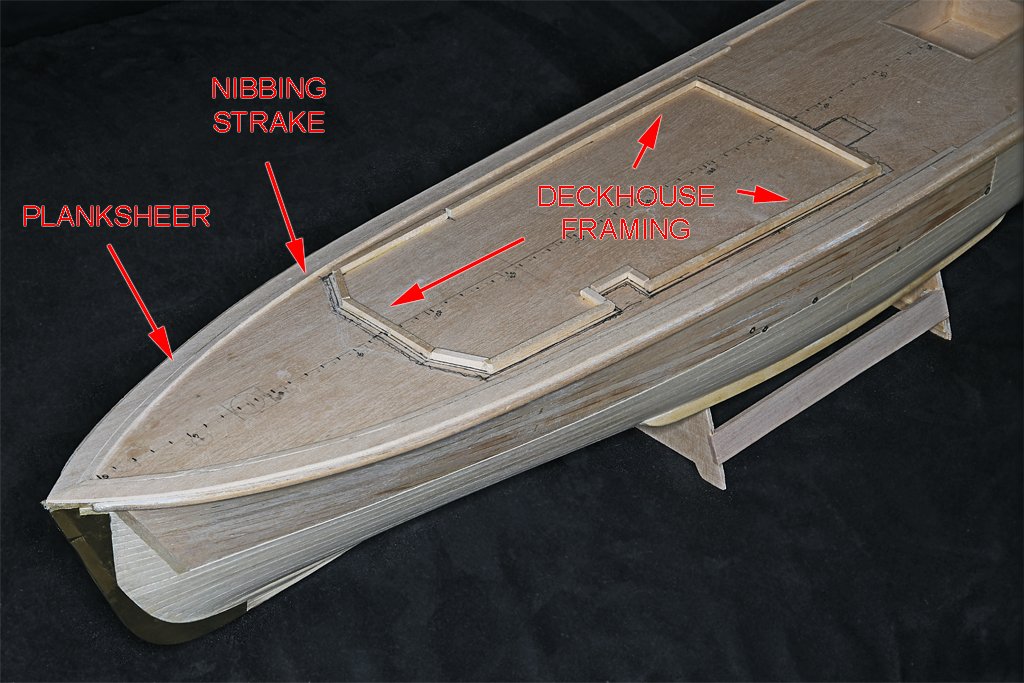
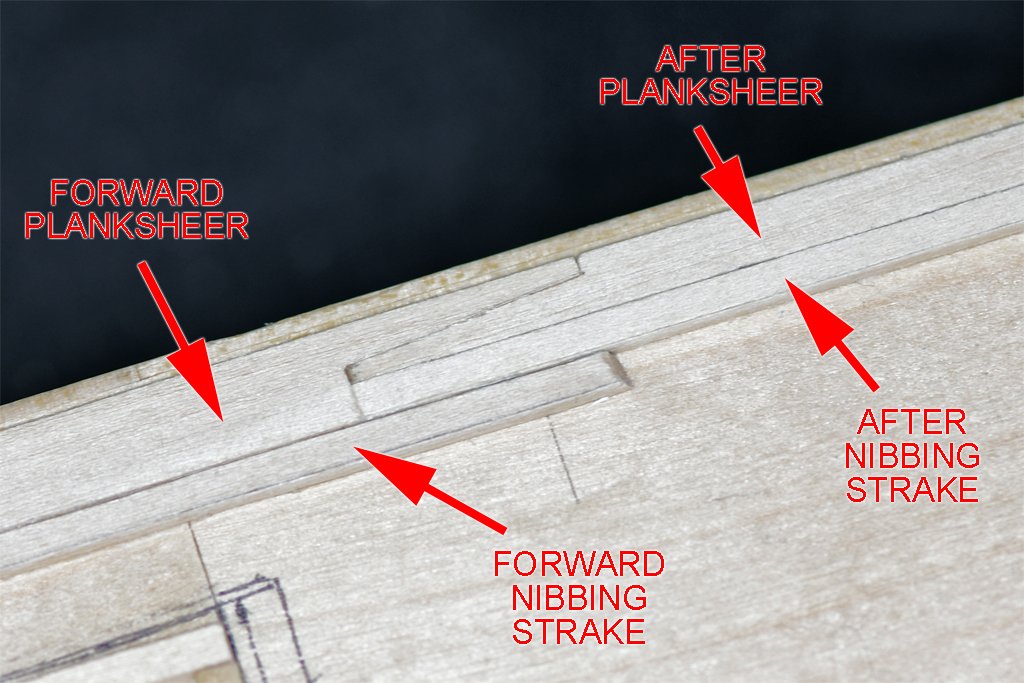
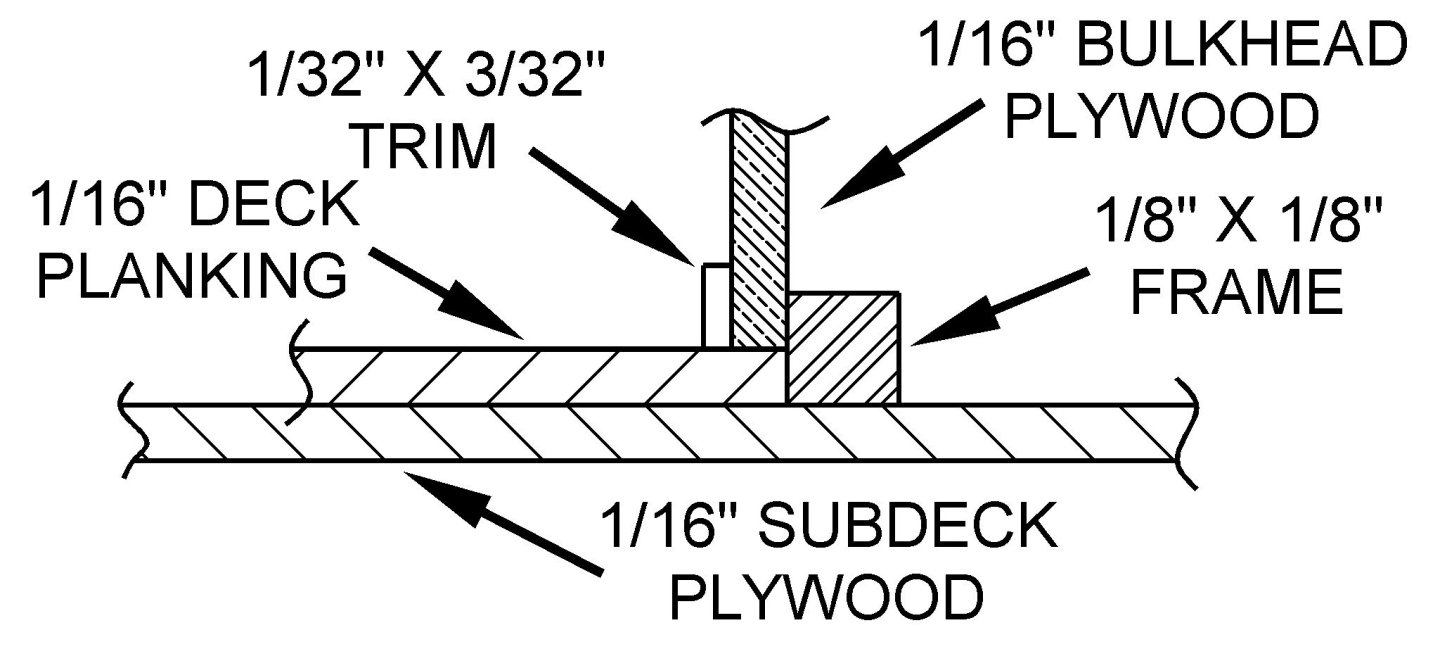


.jpg.62a782a0b520d2e0098ebd470b7f3939.jpg)
